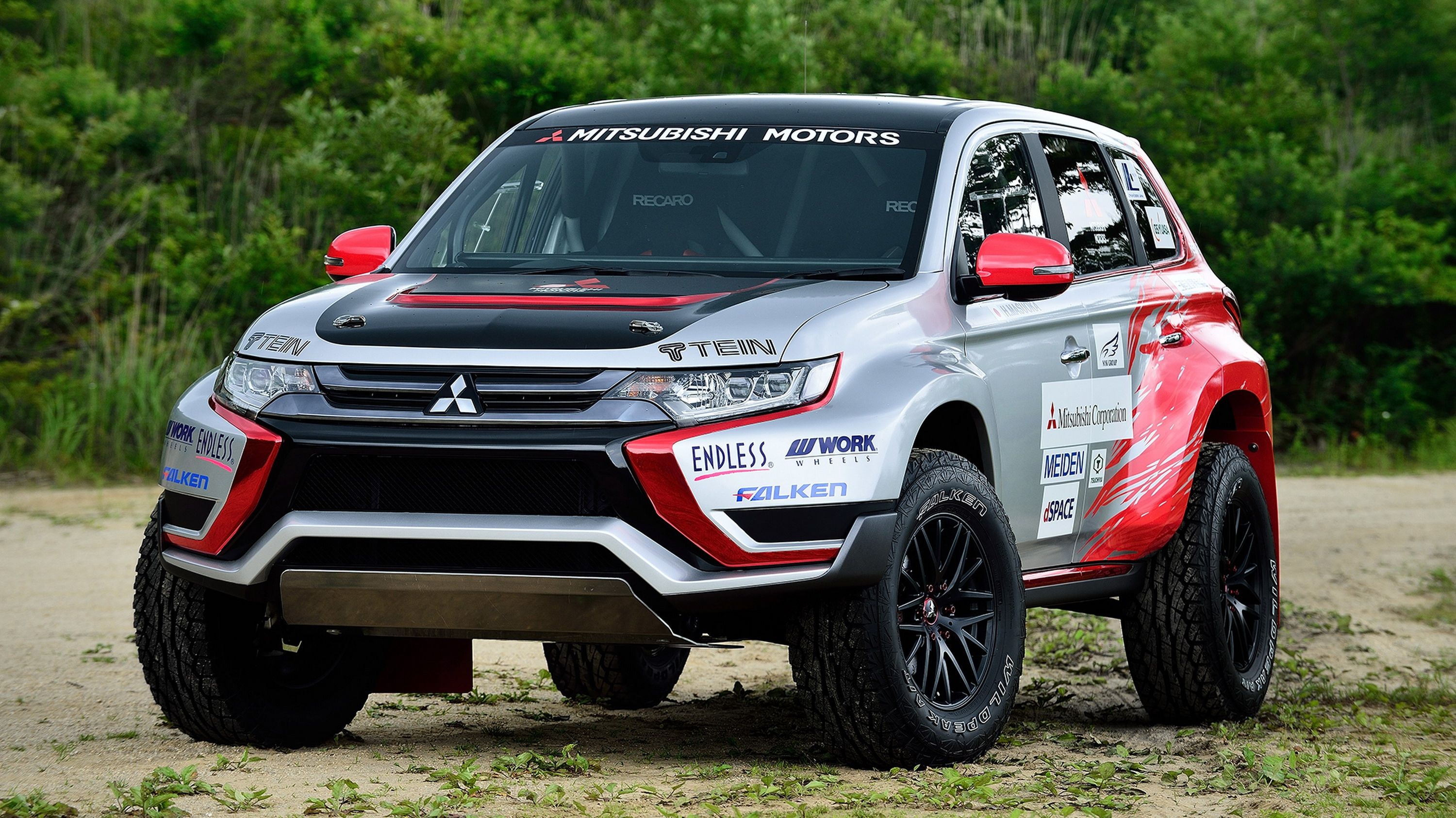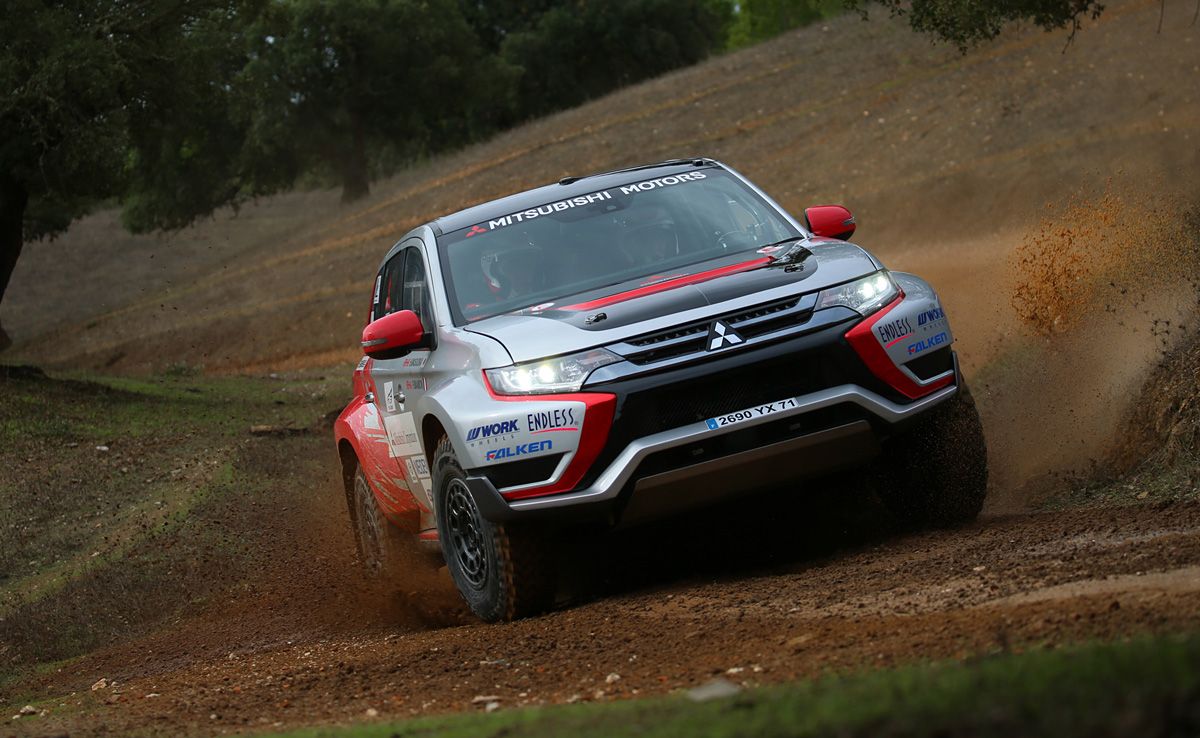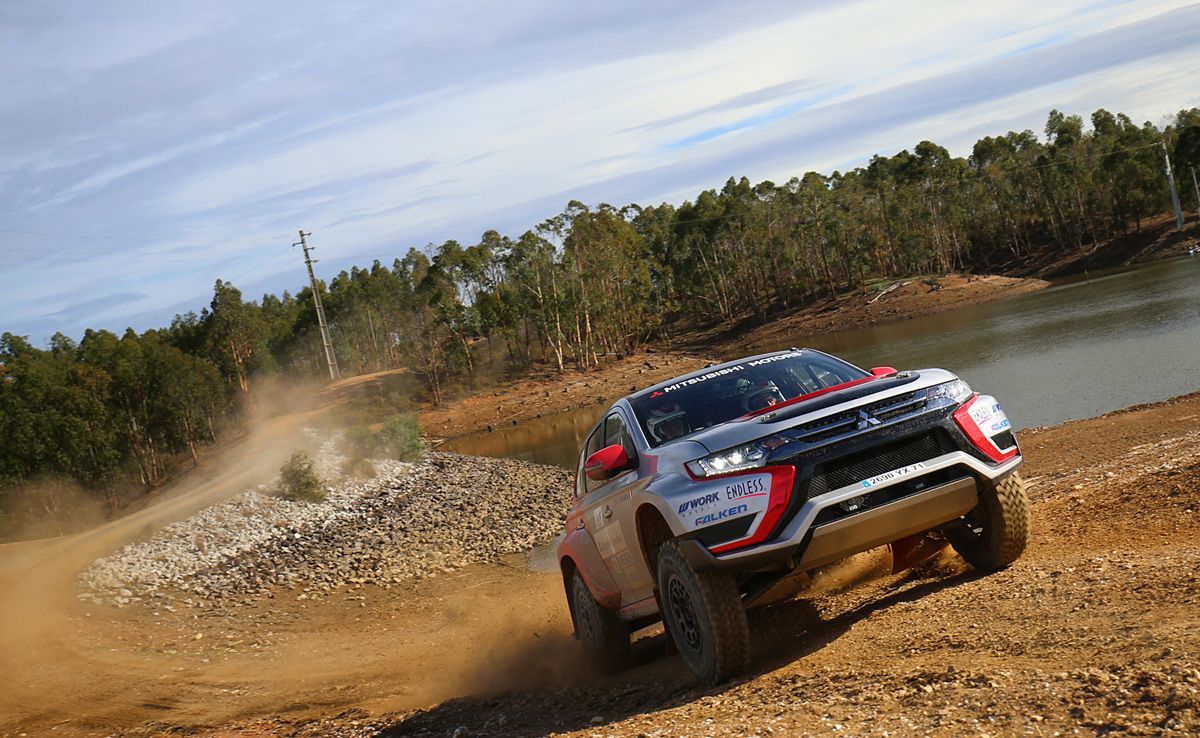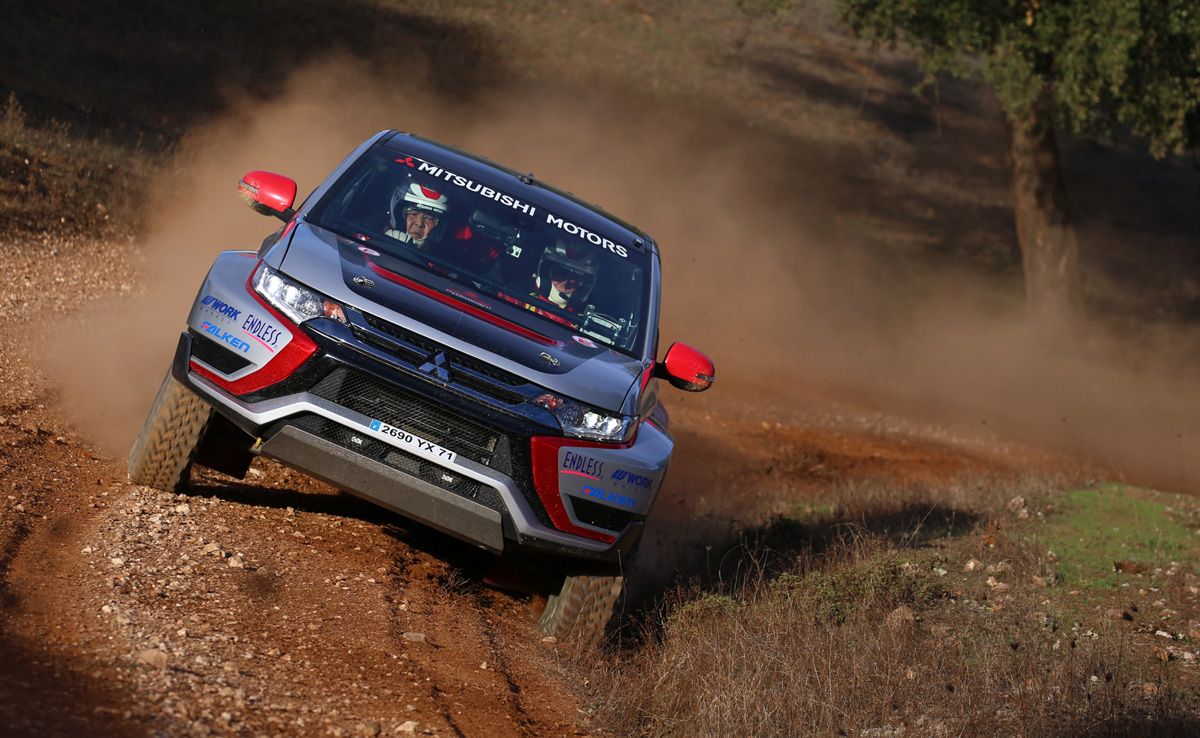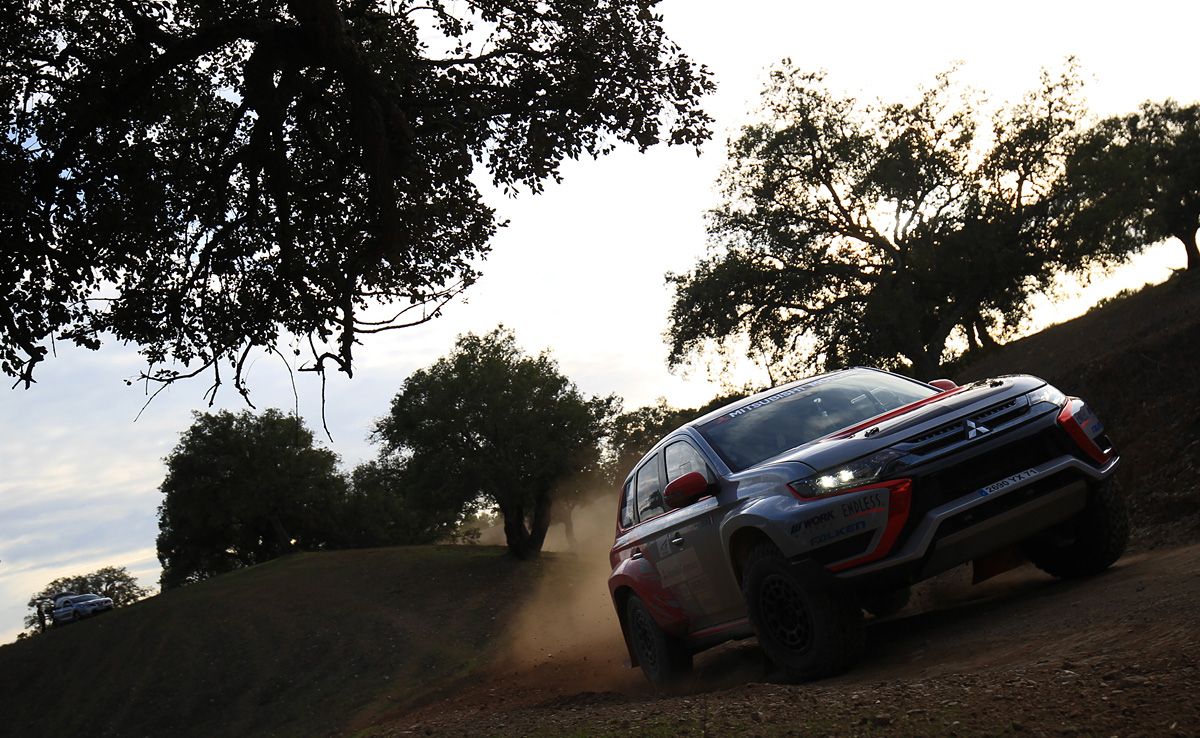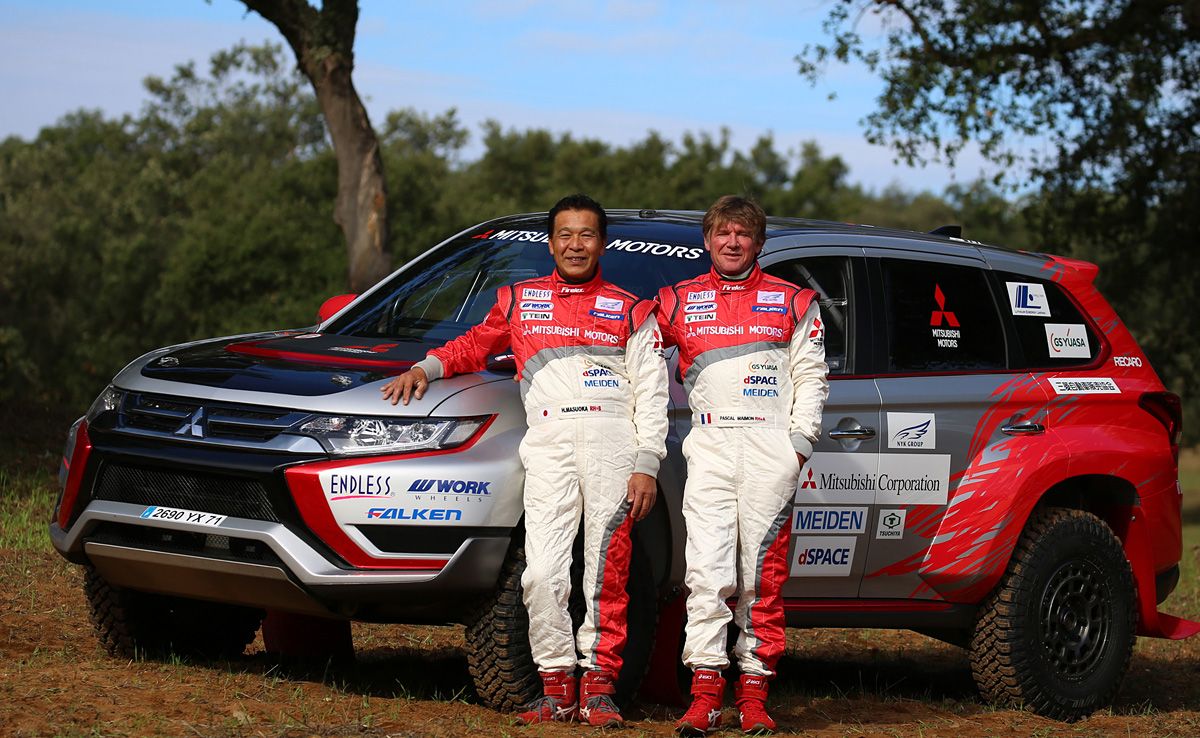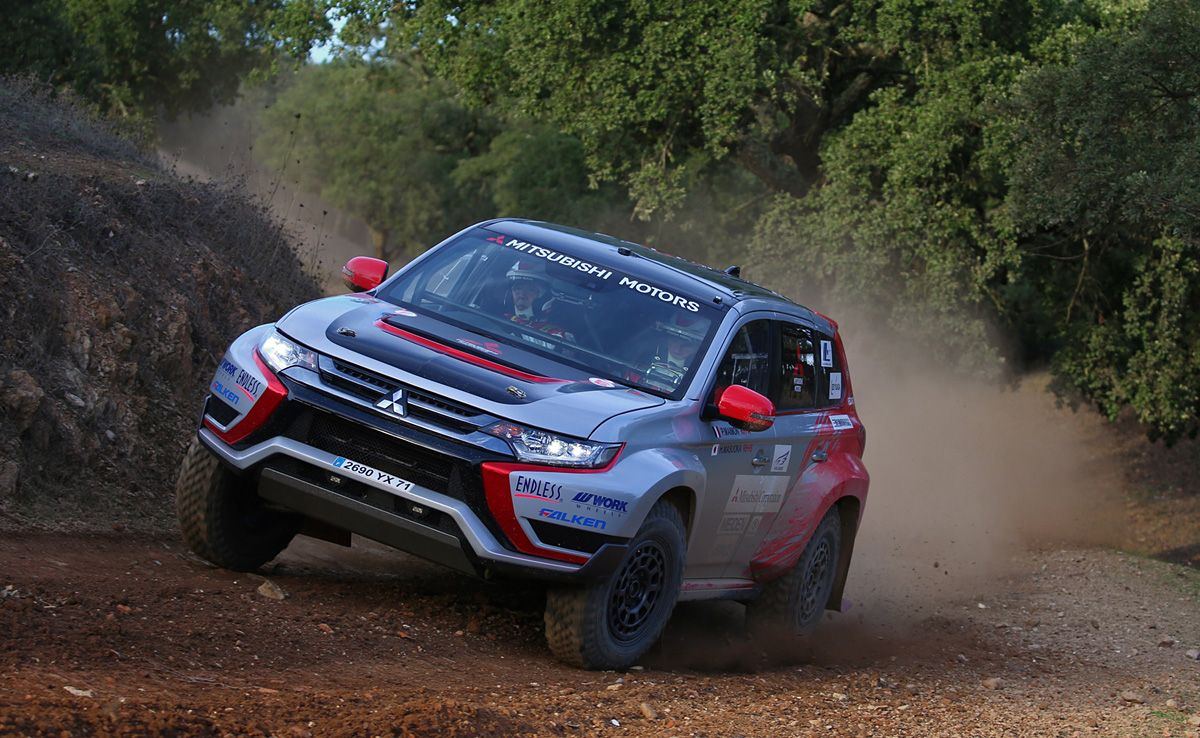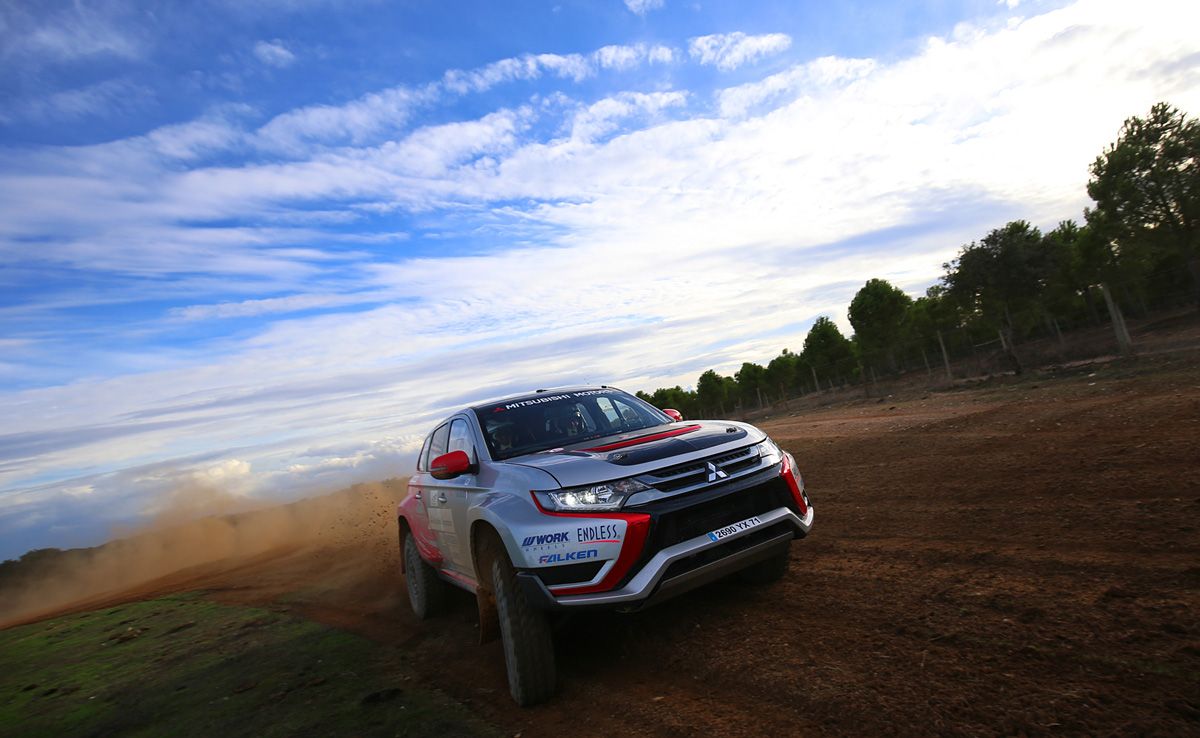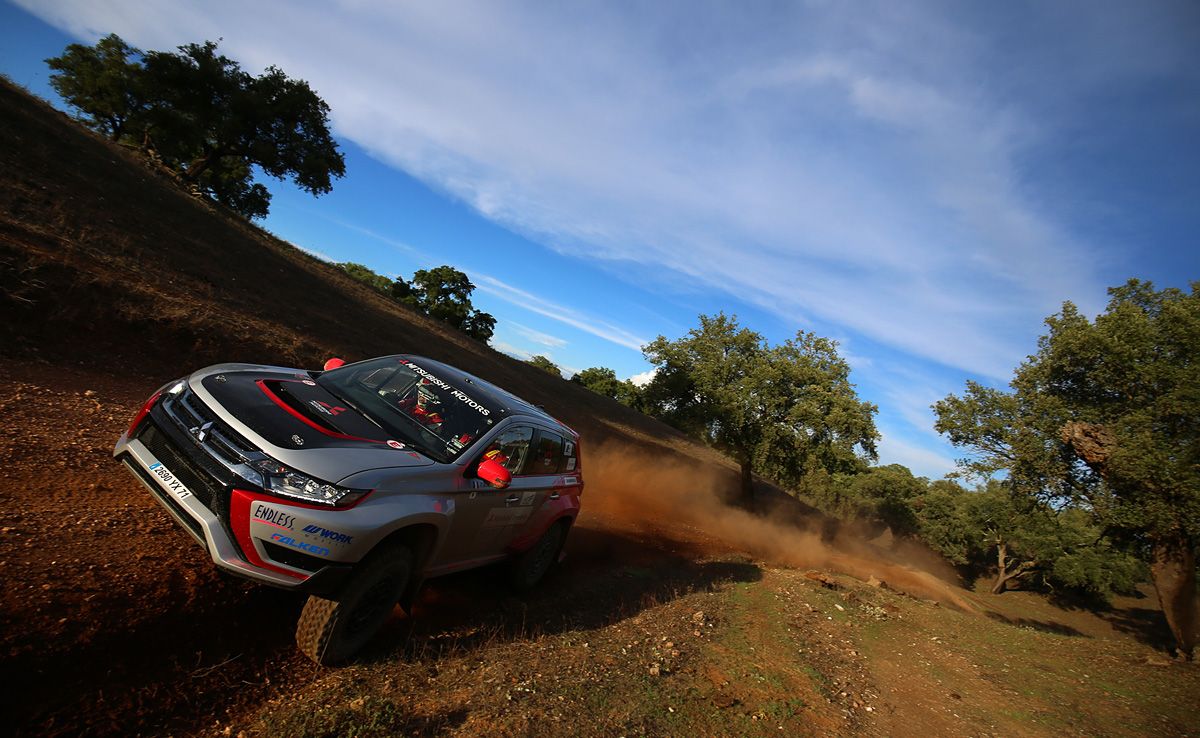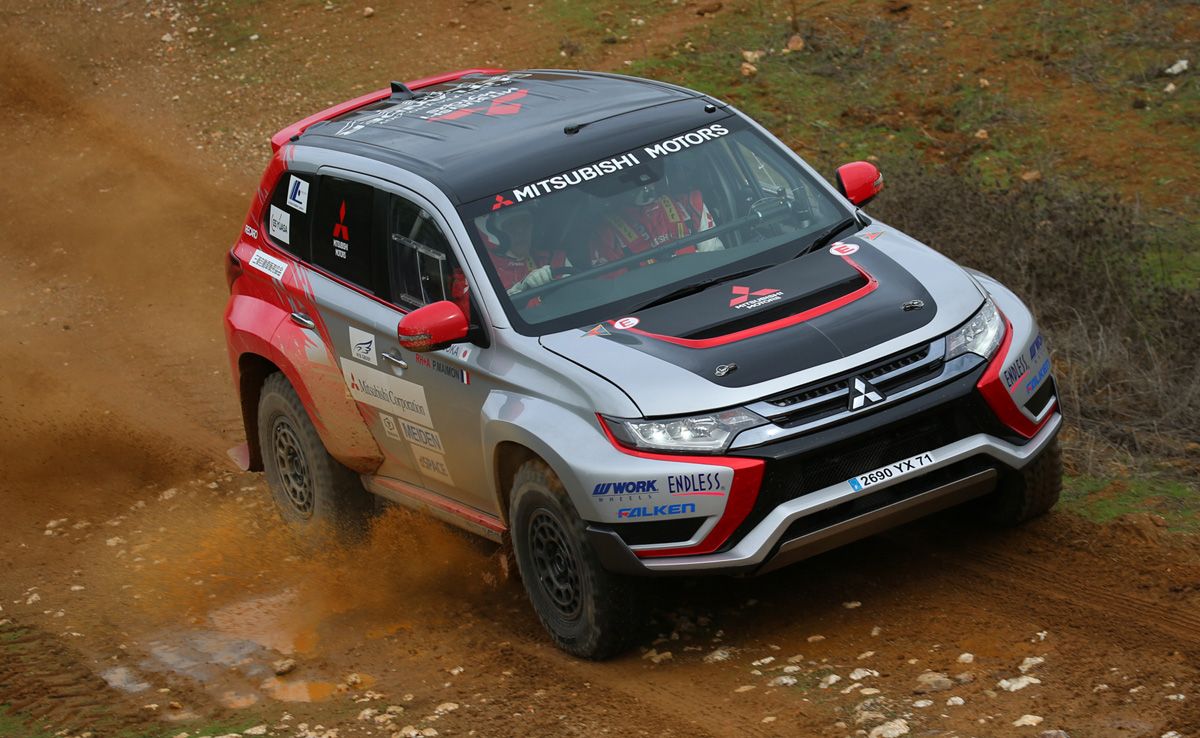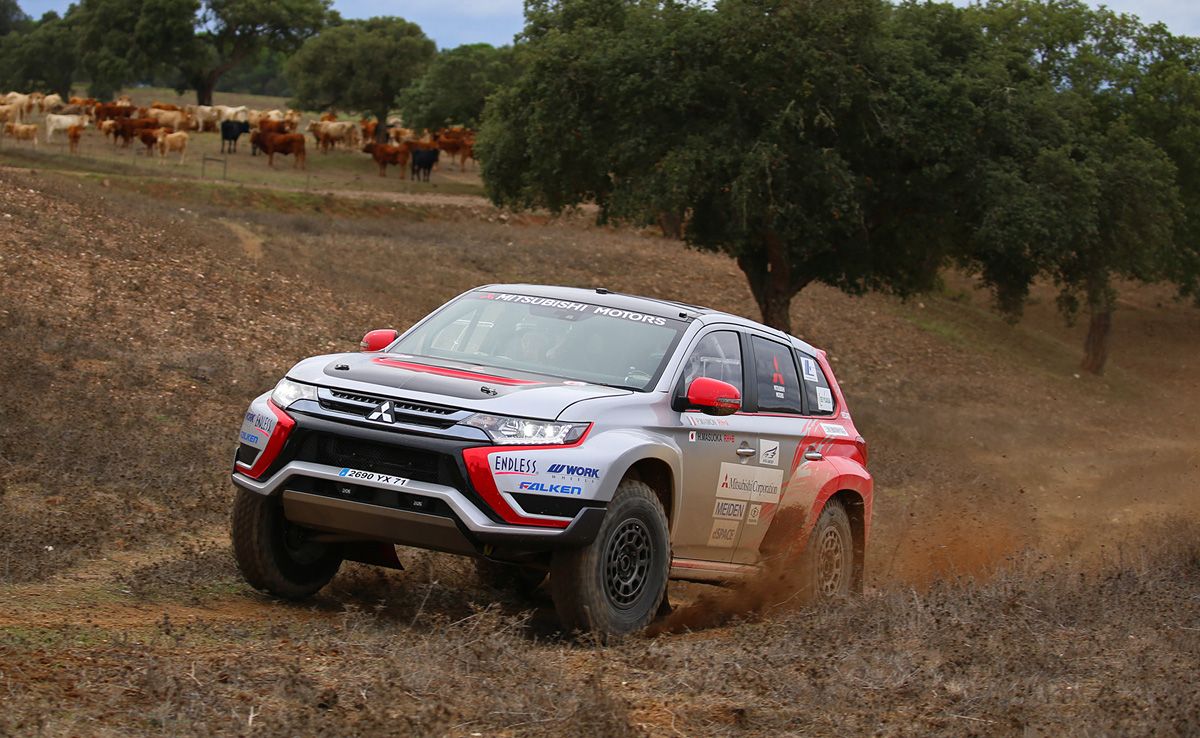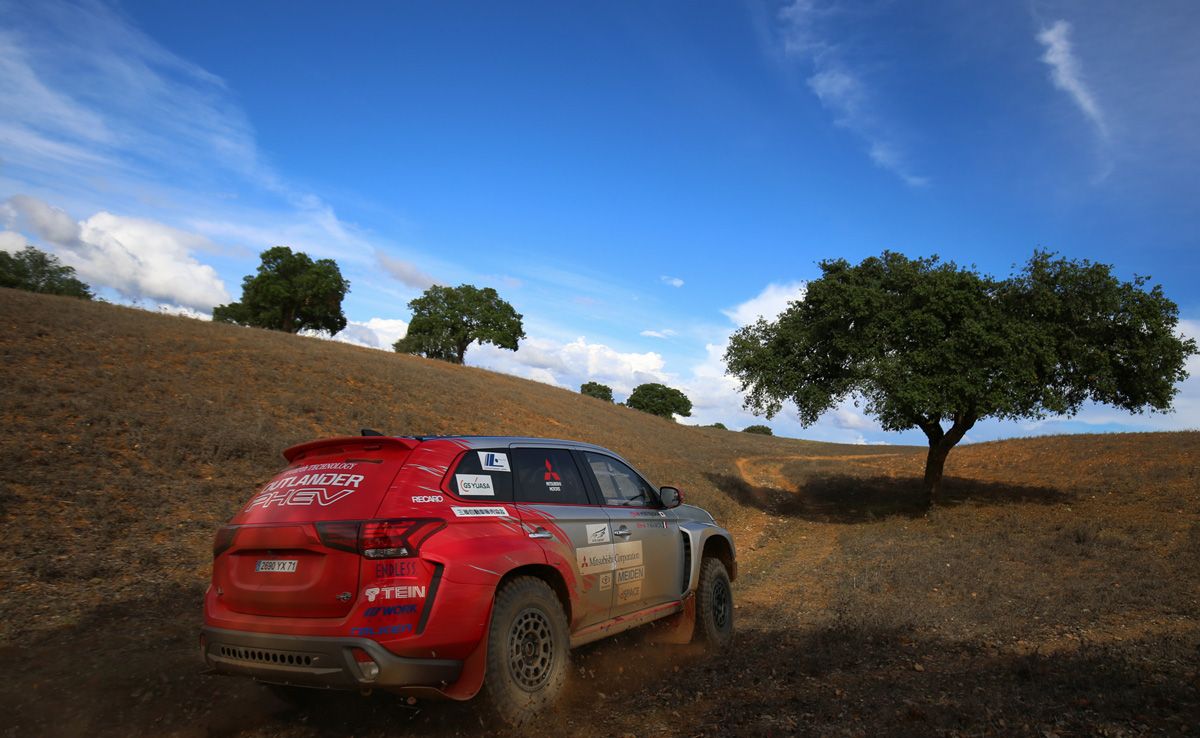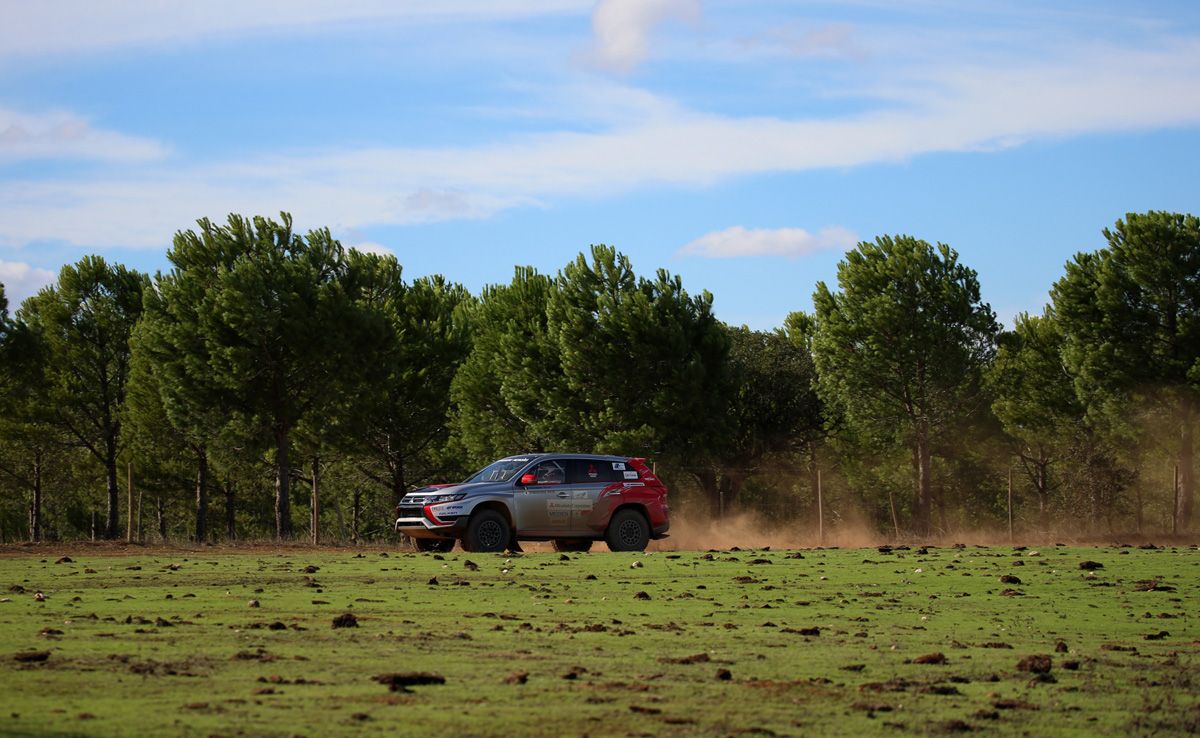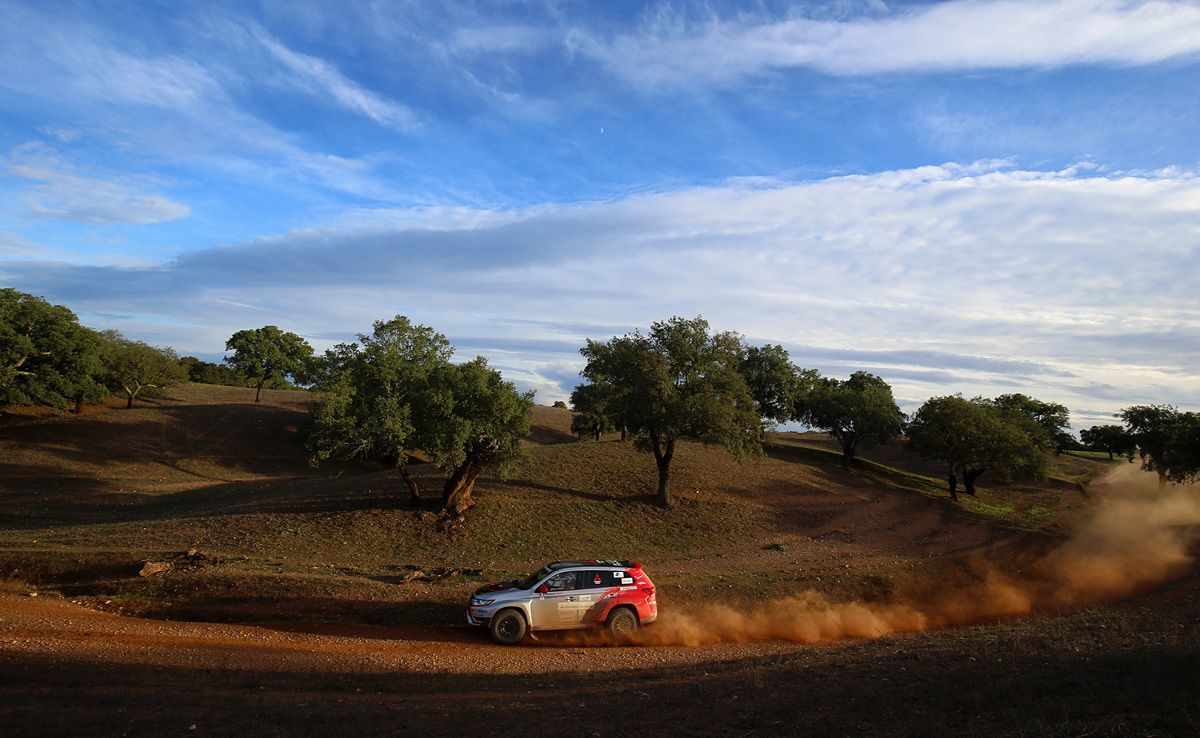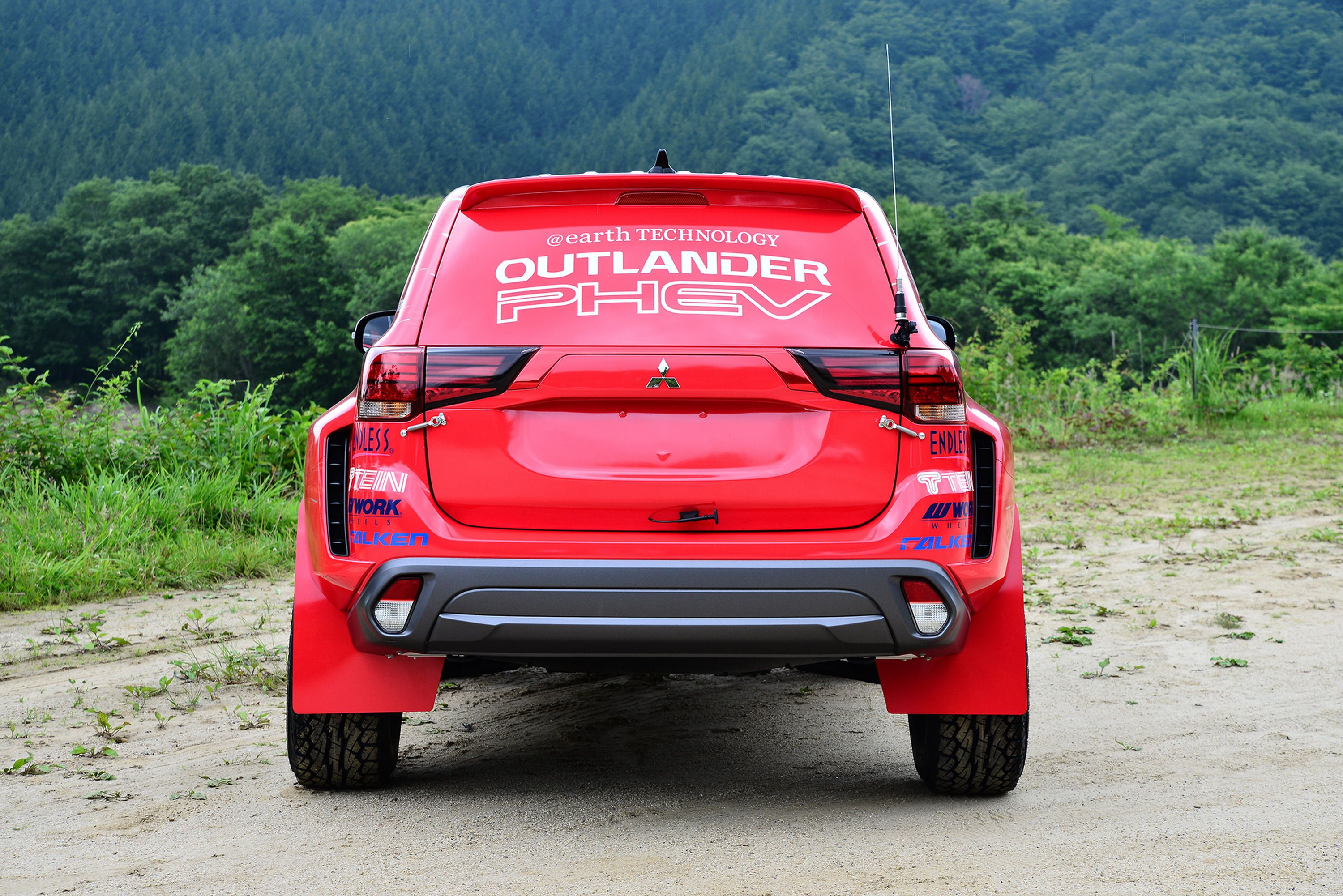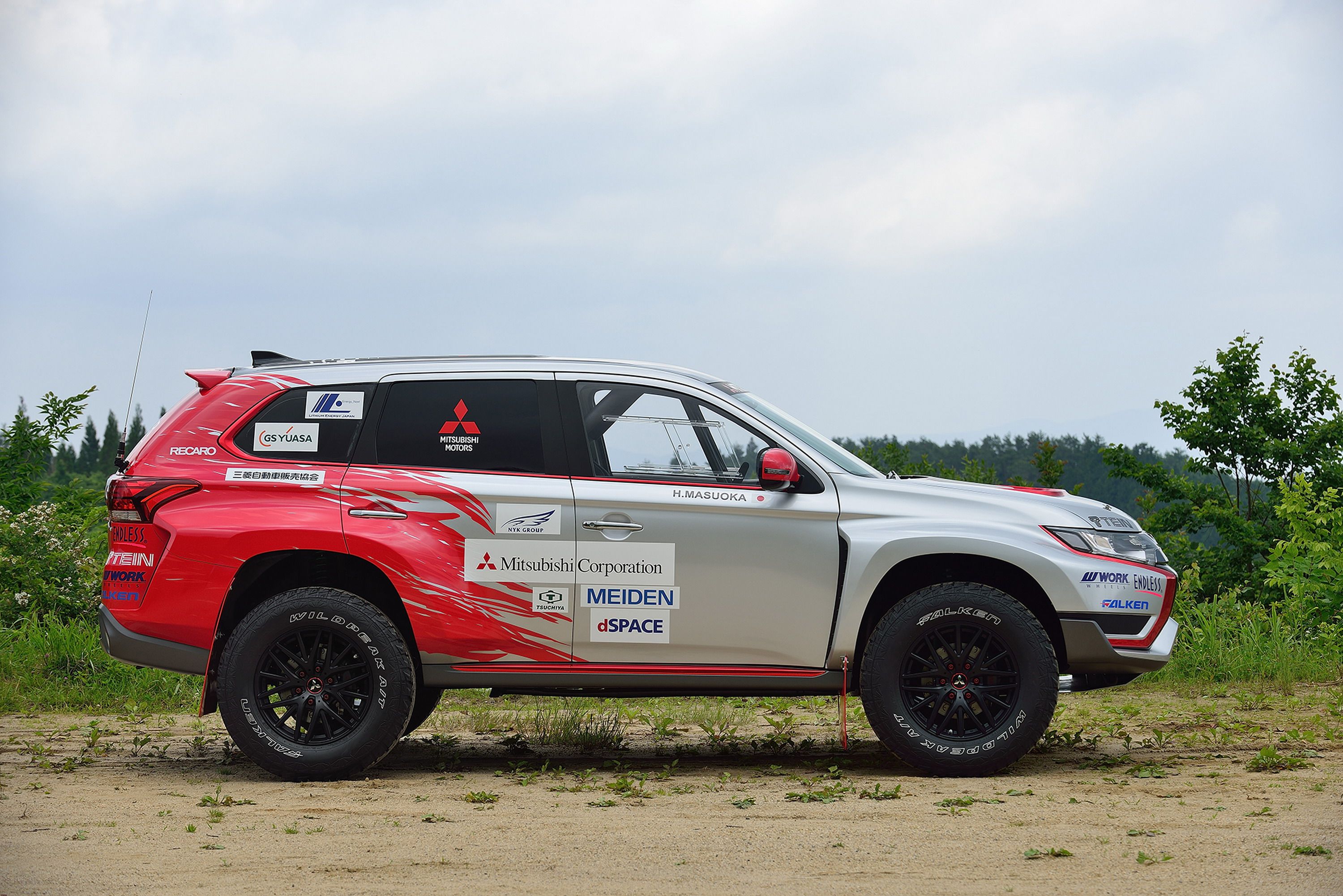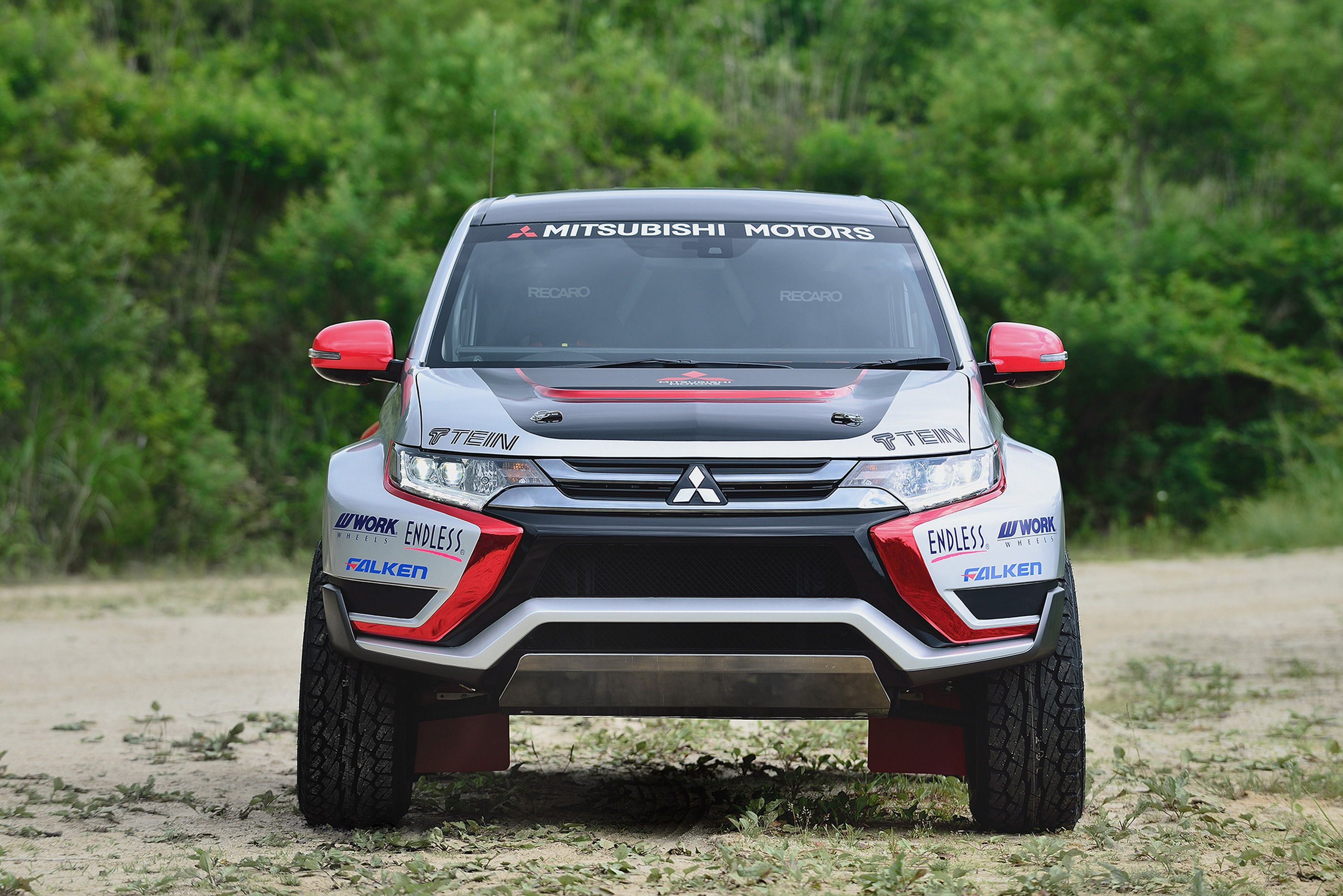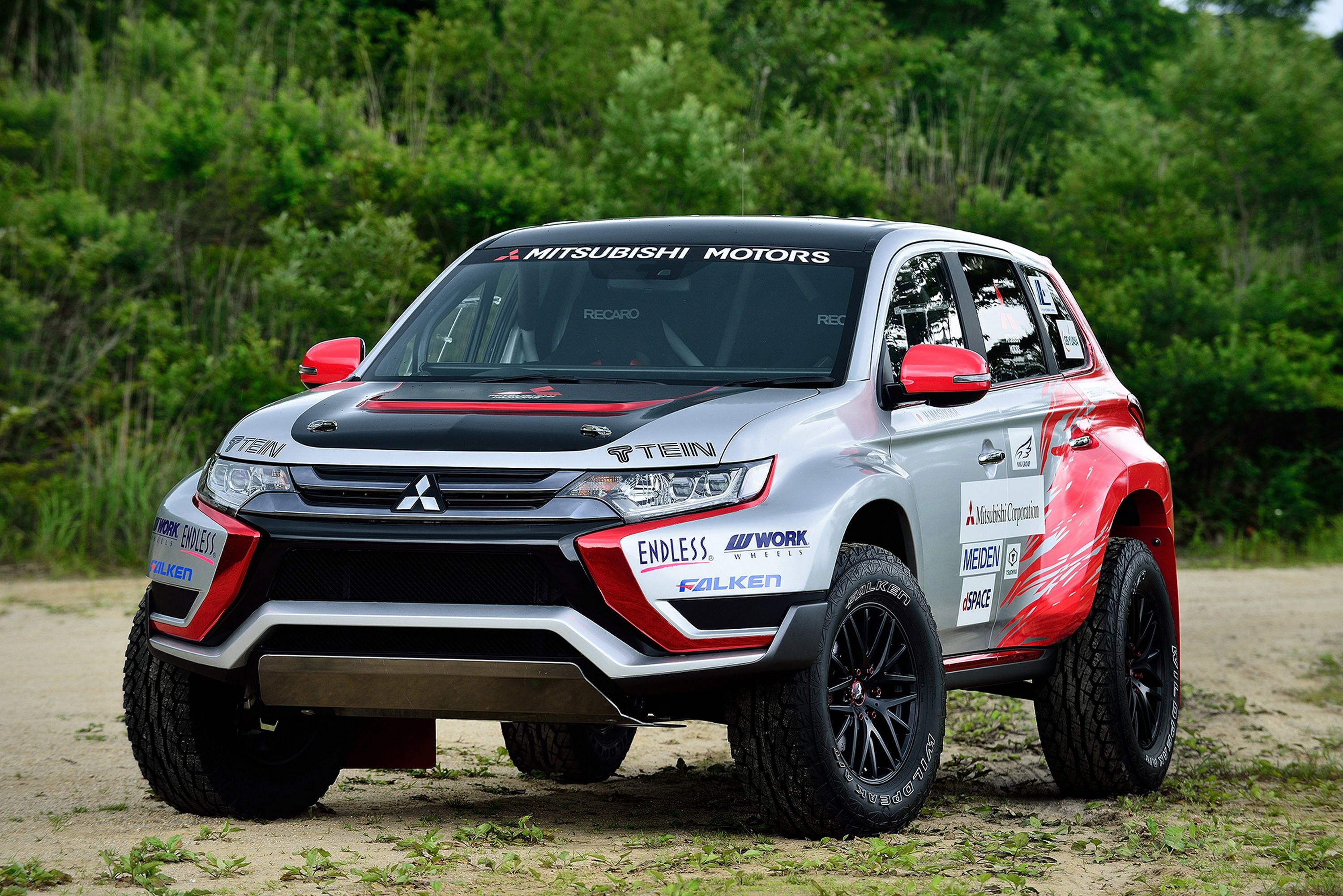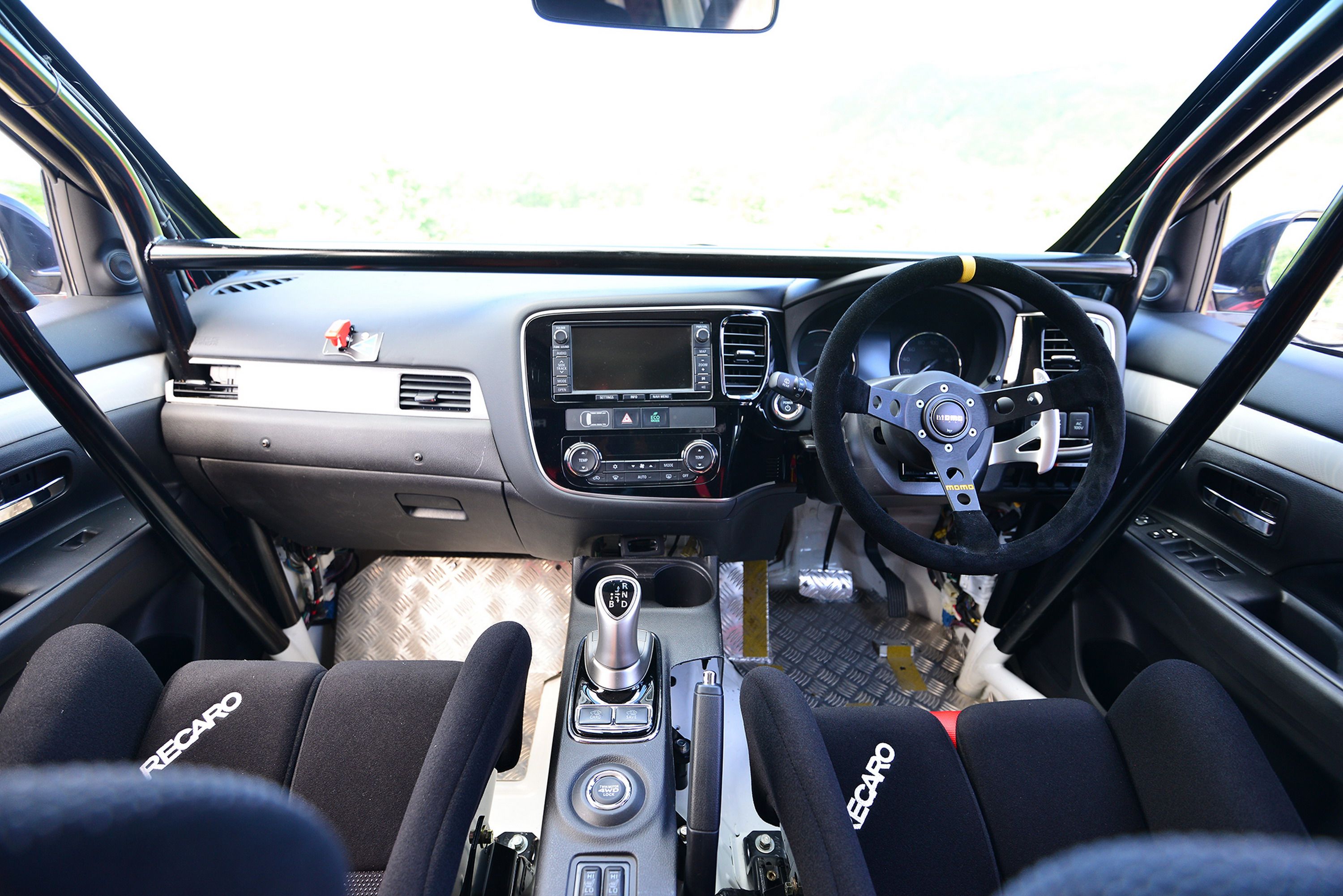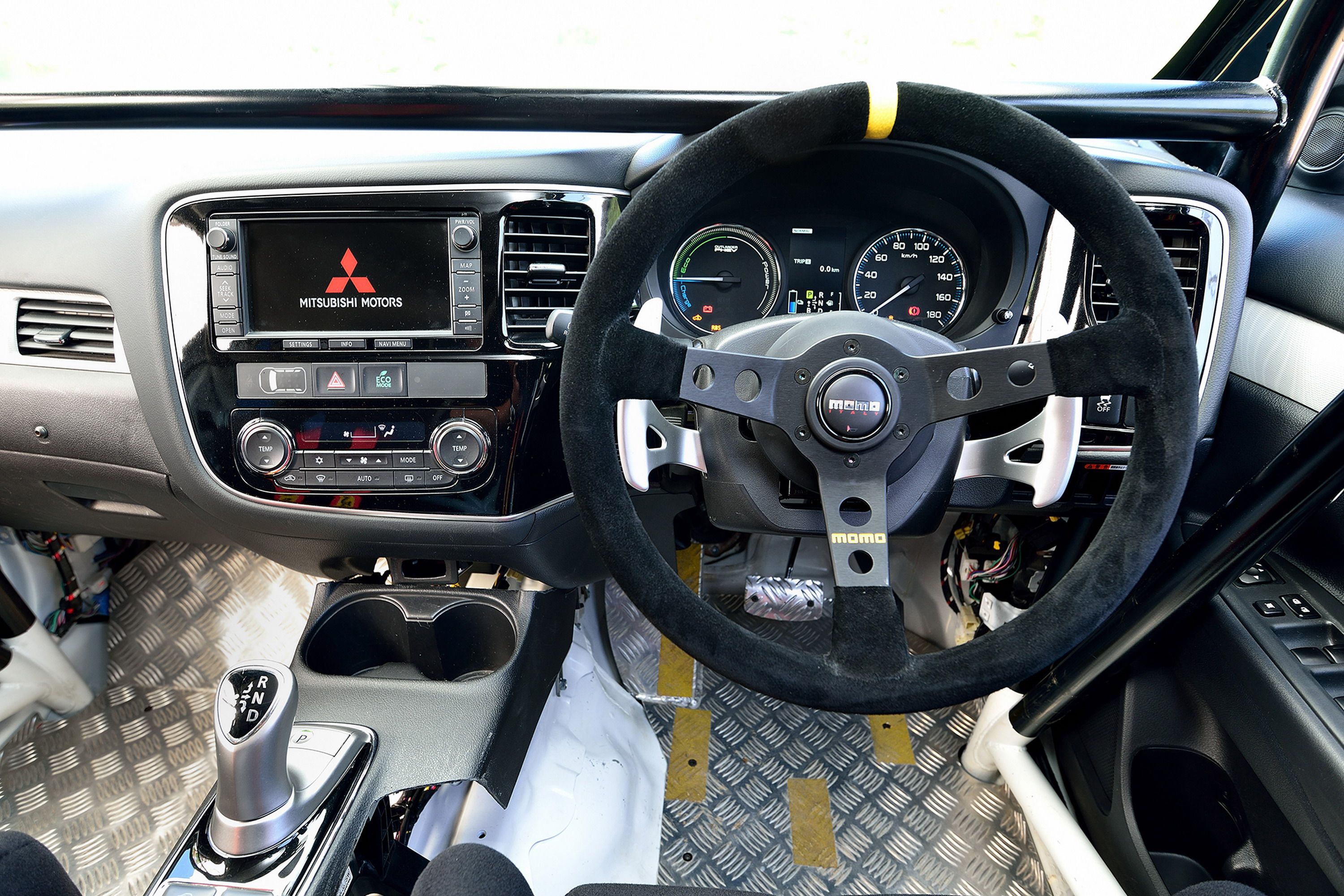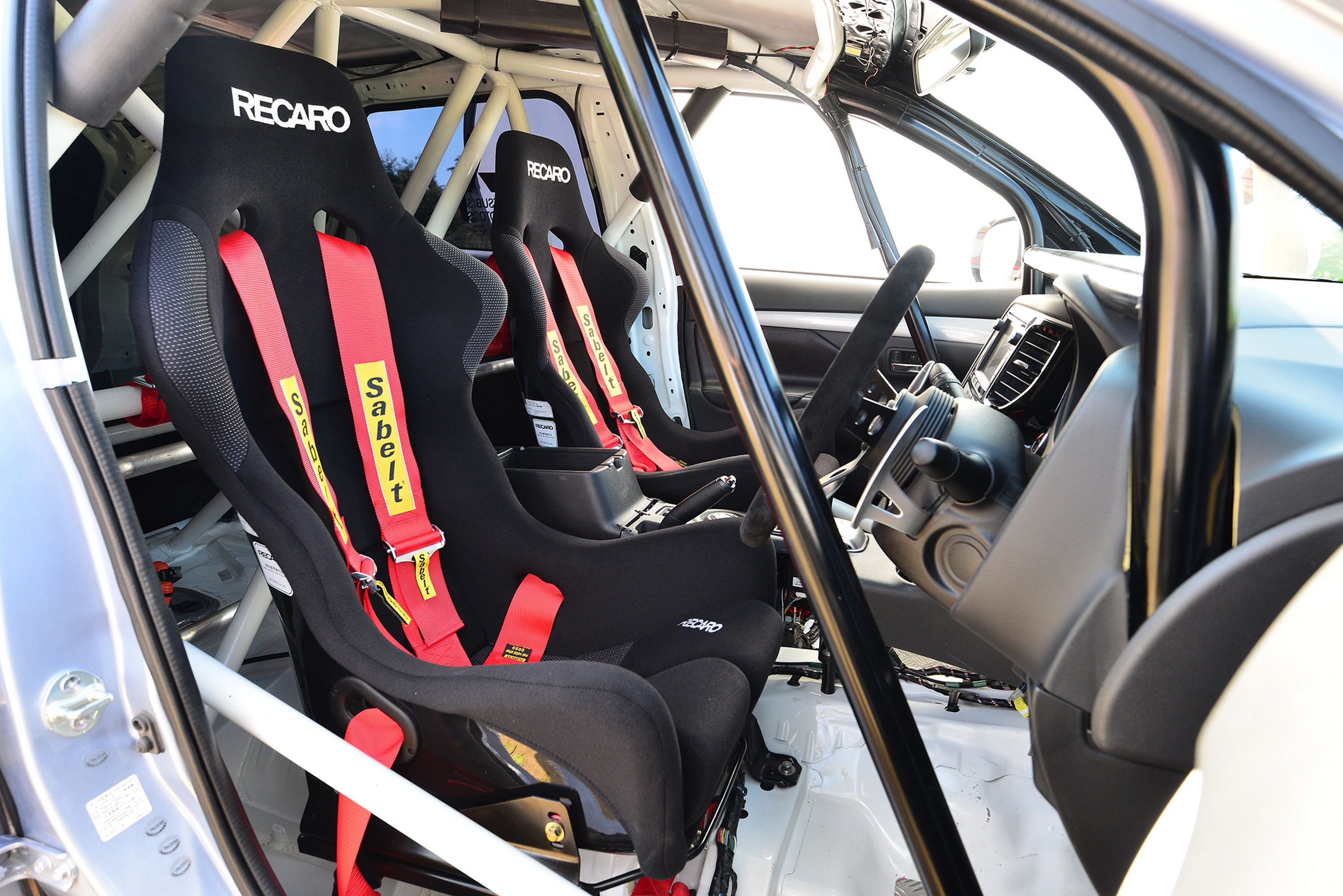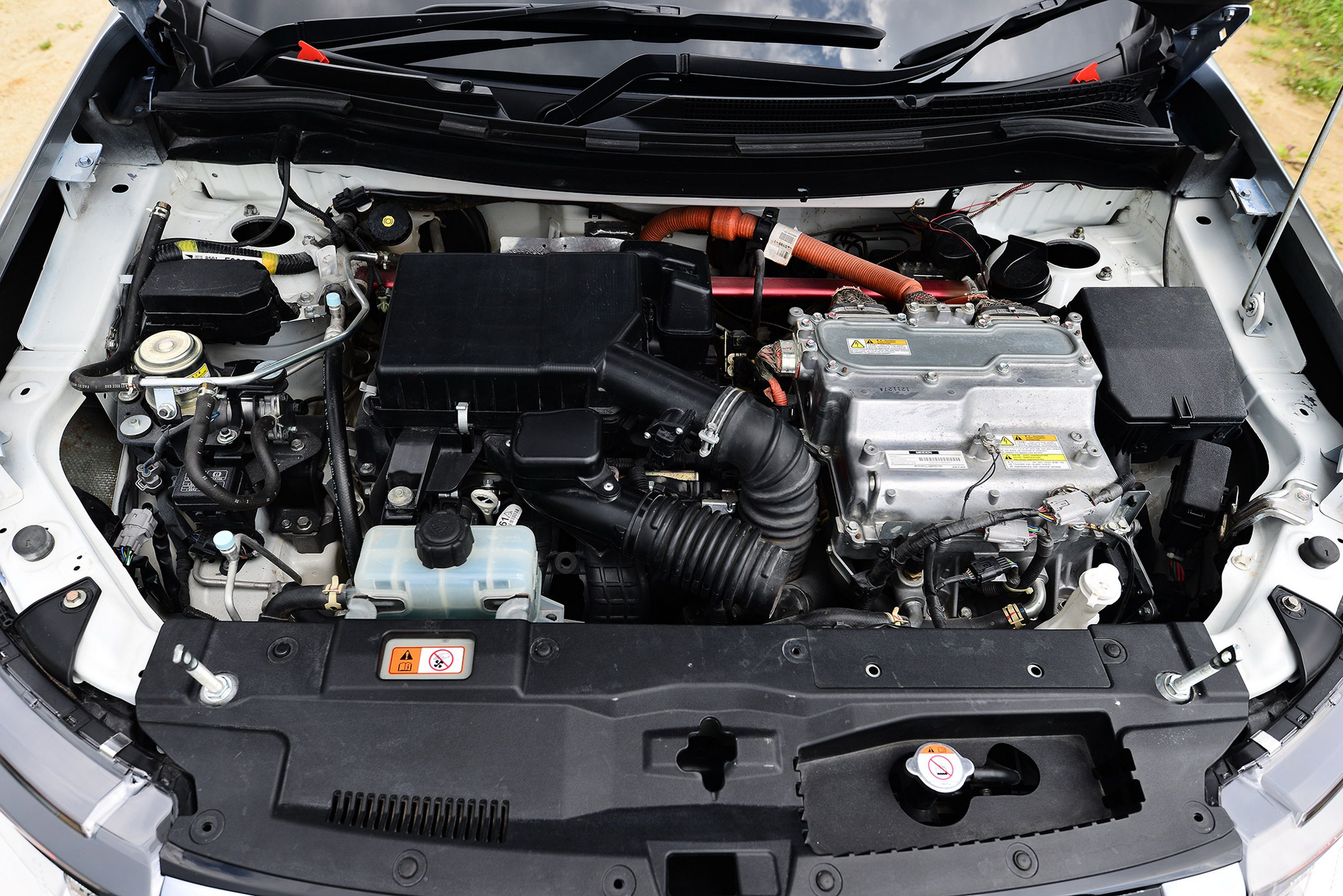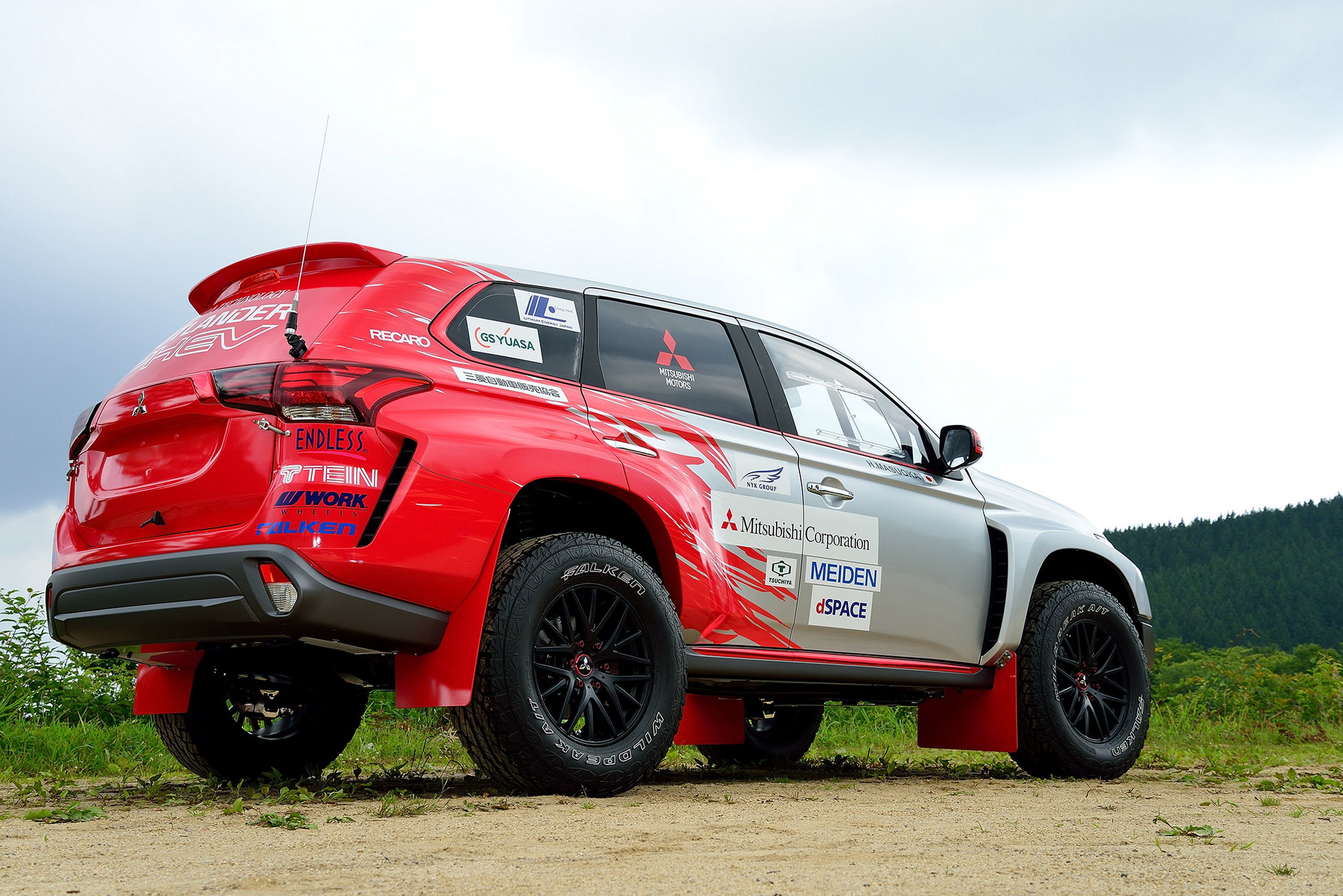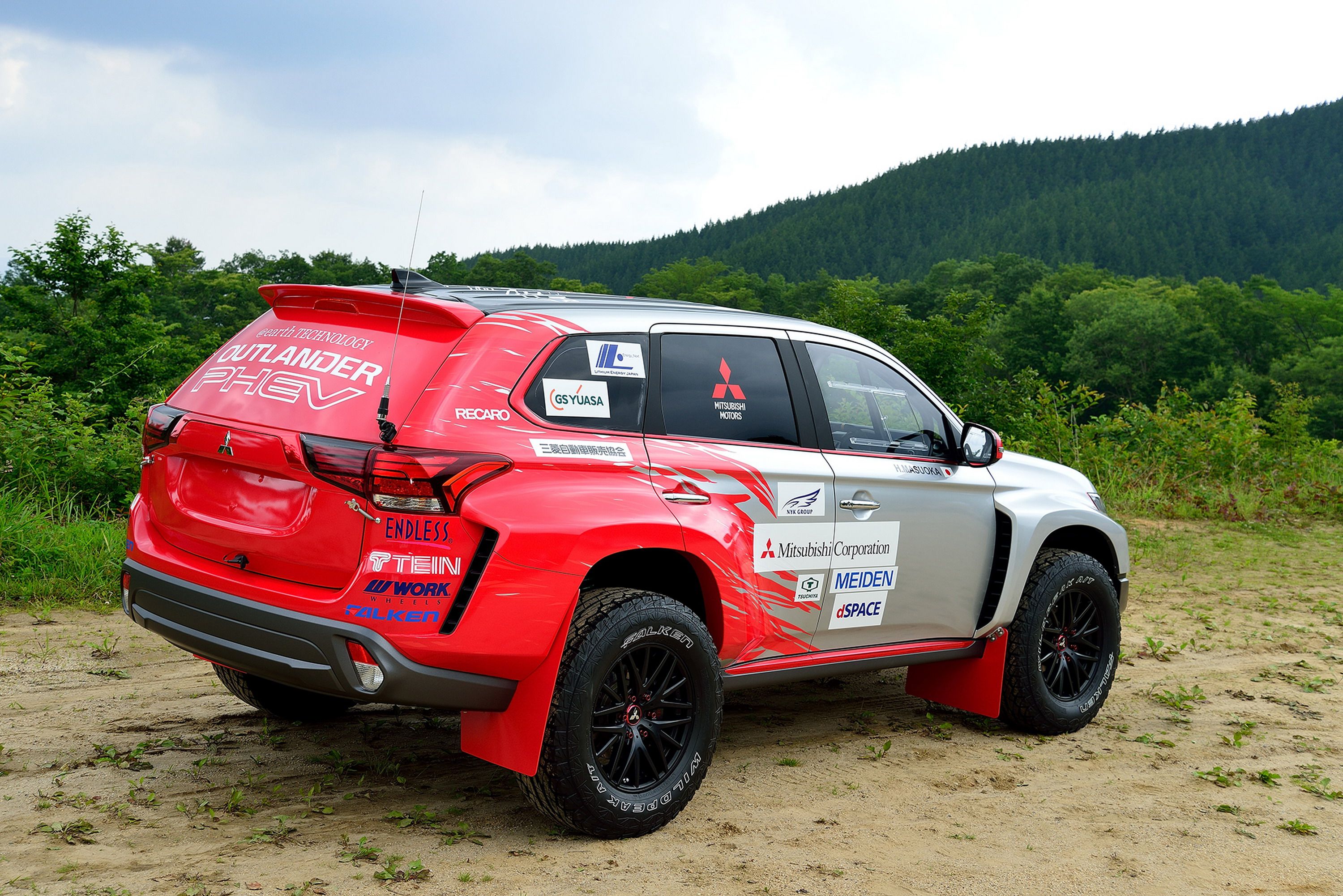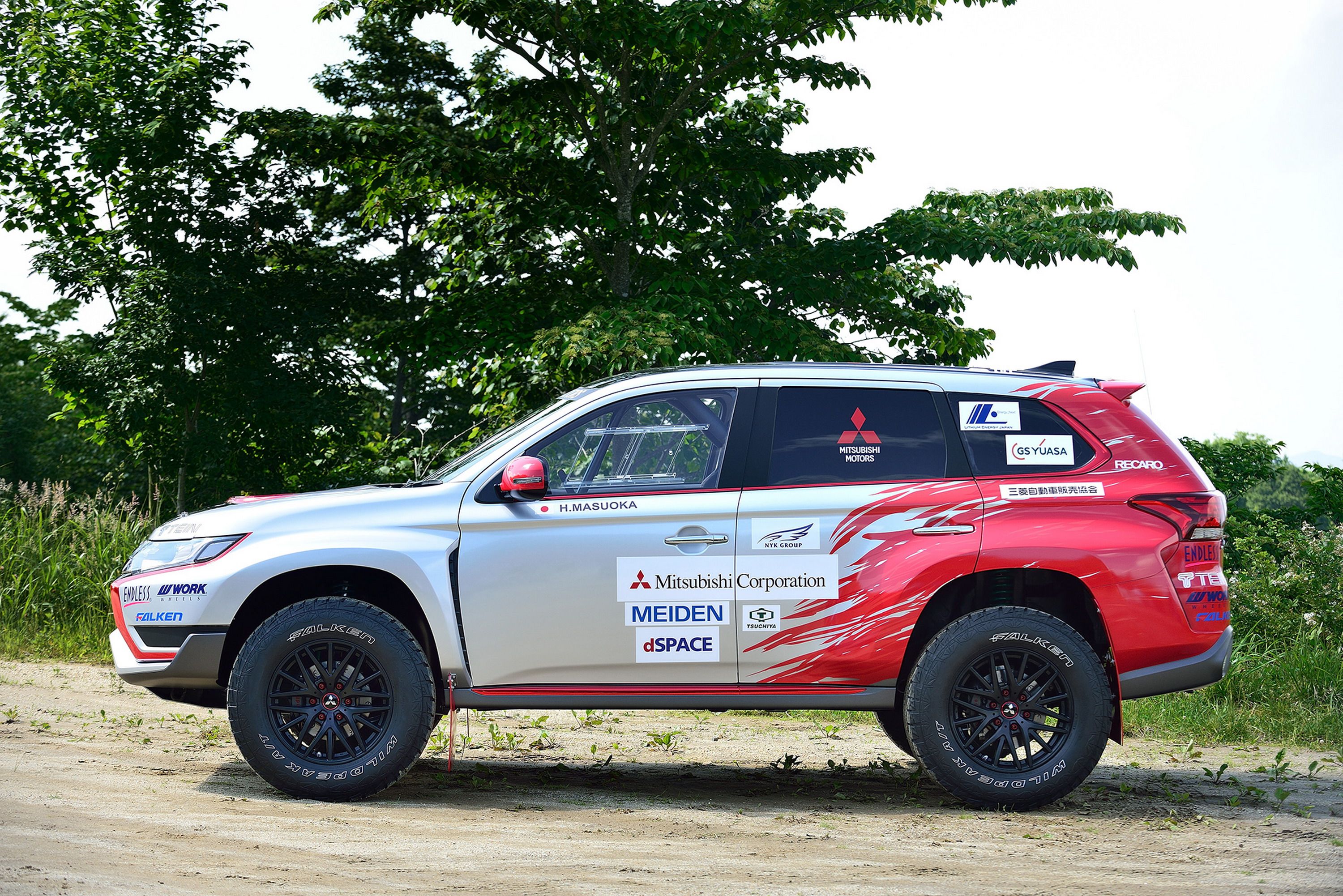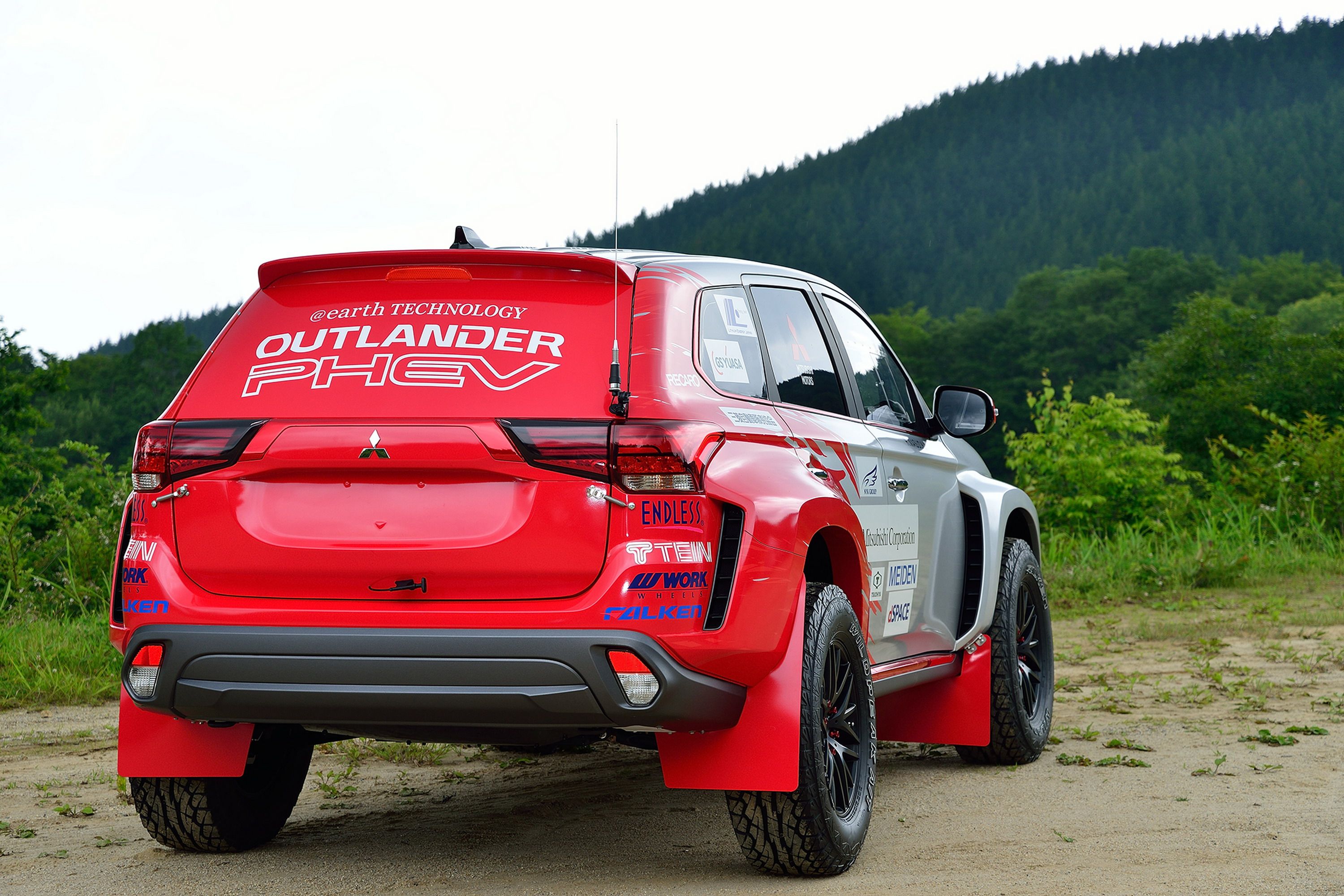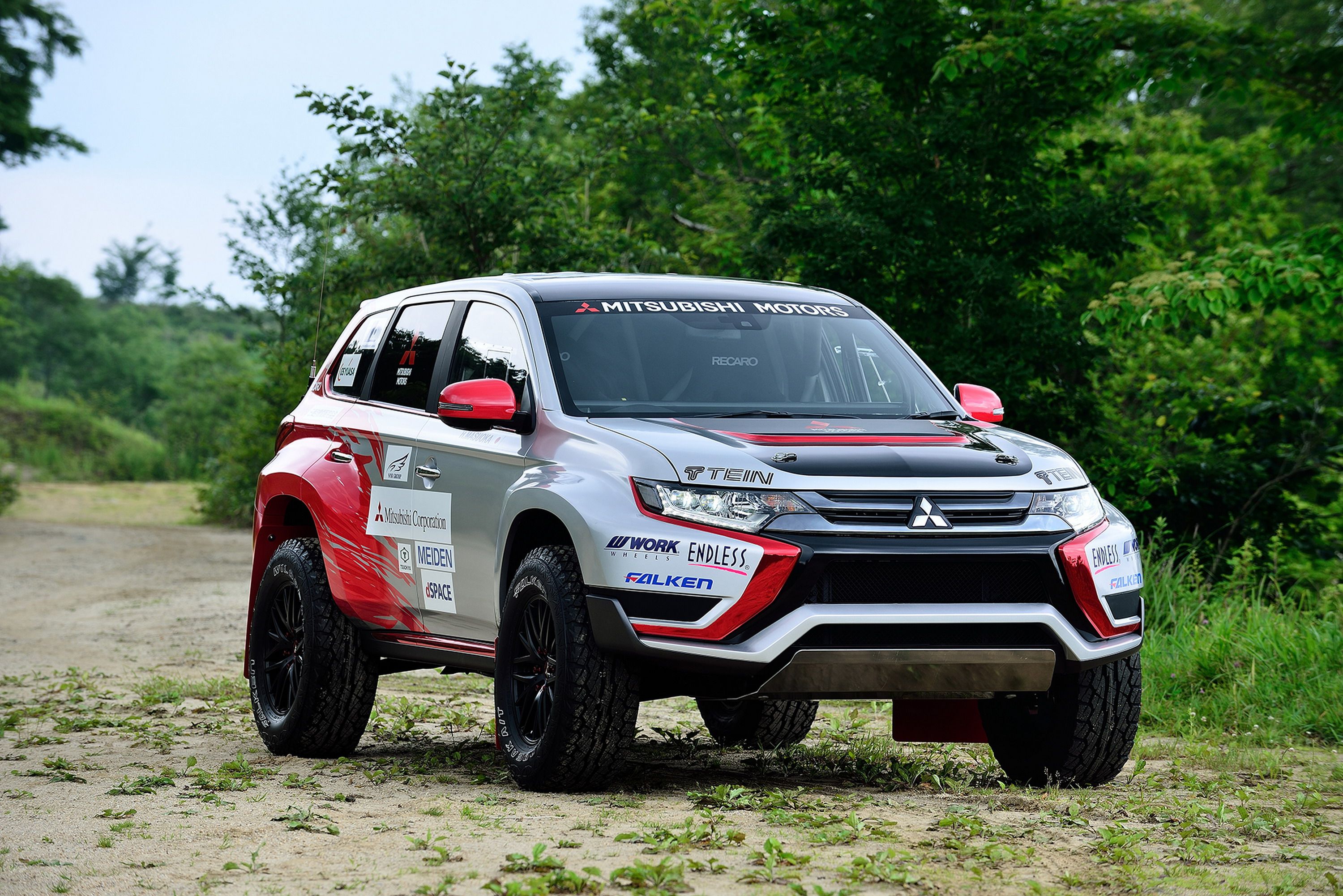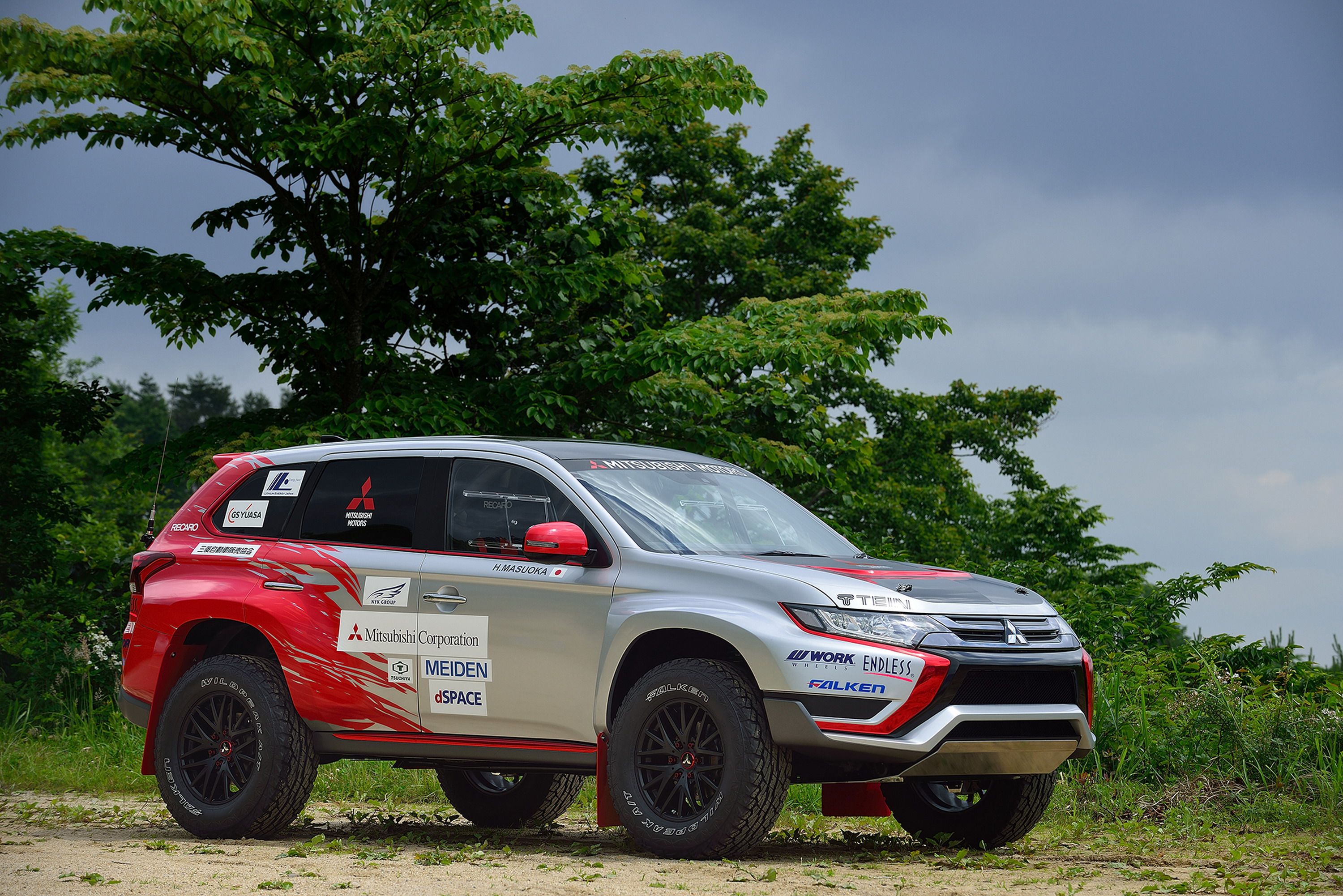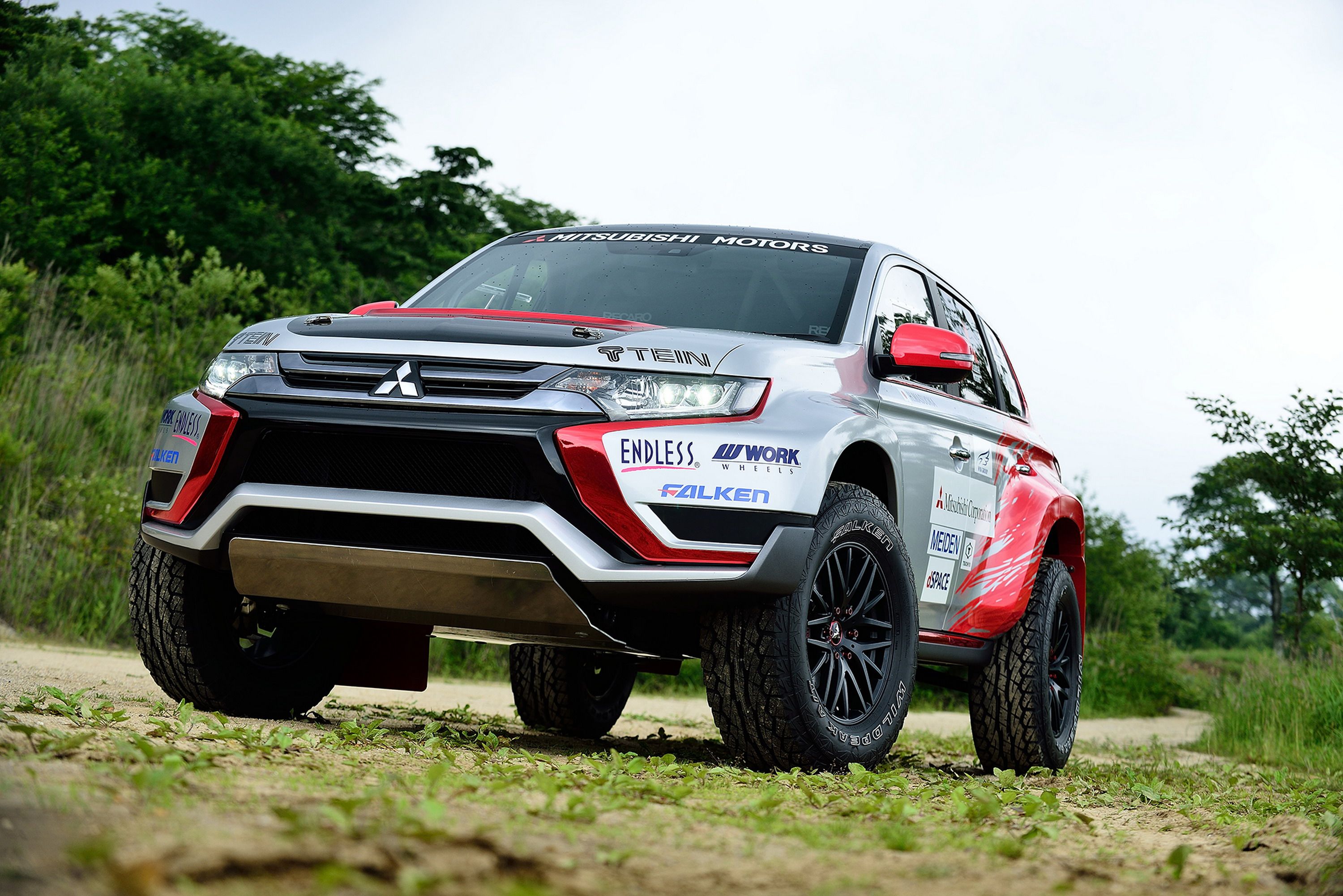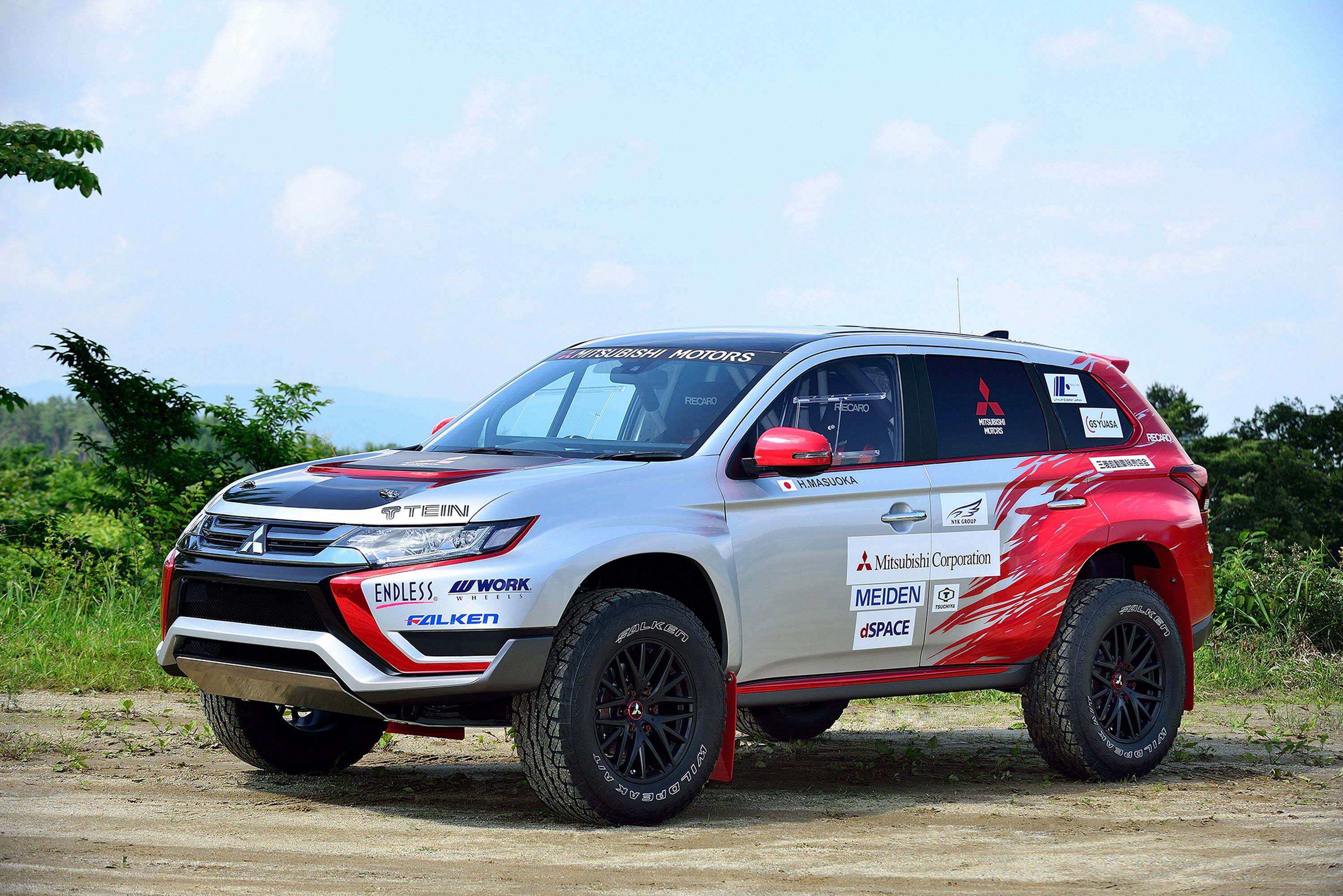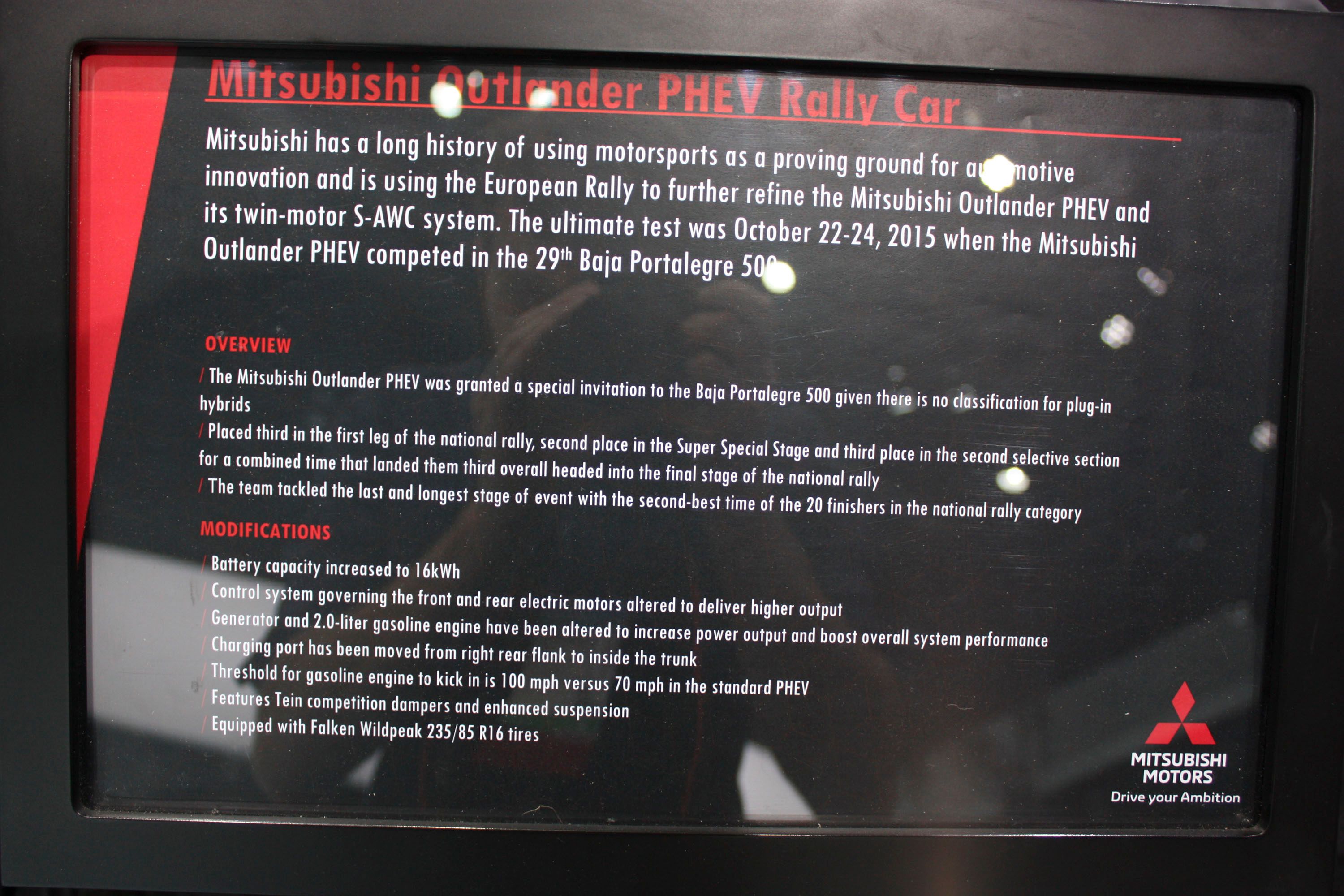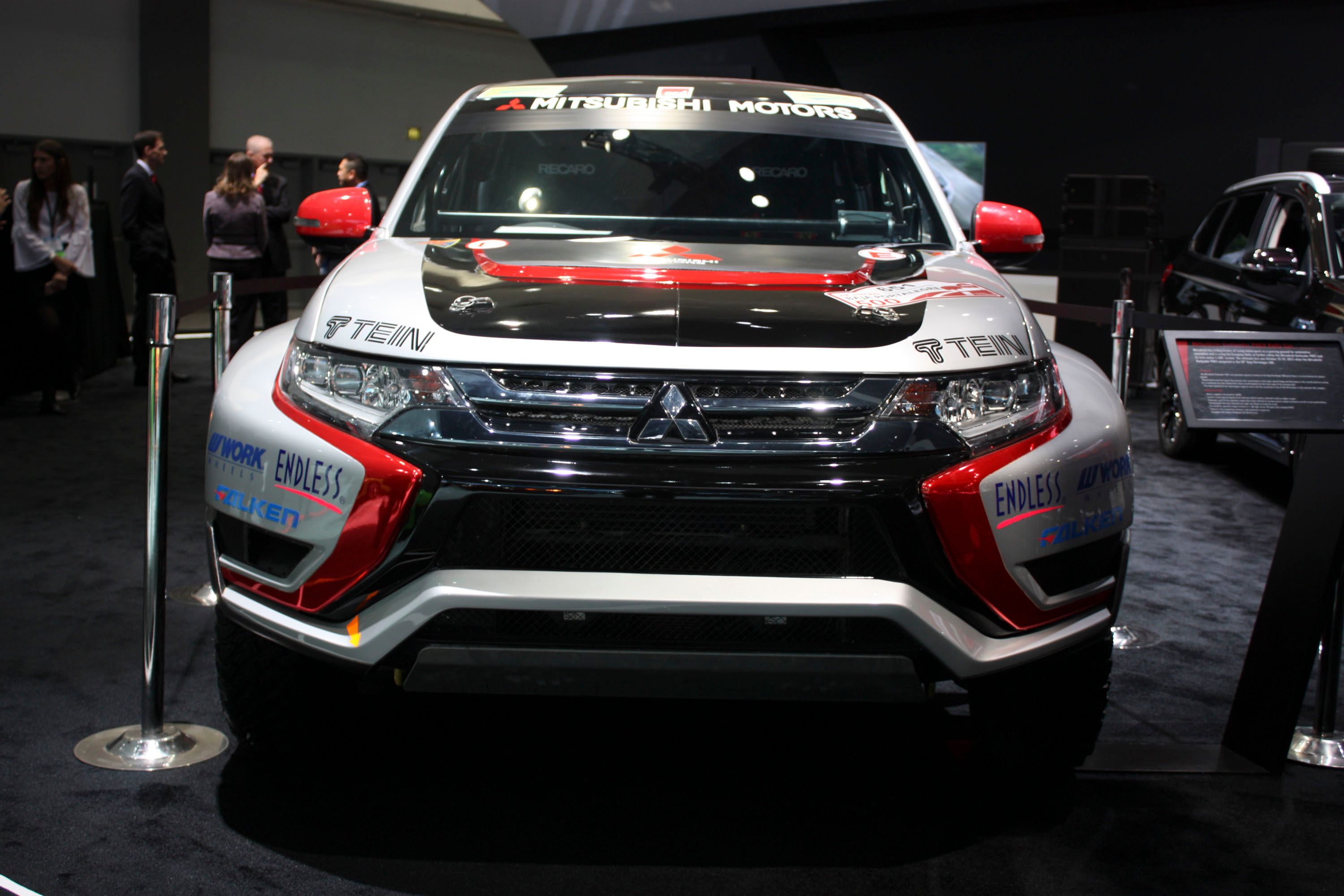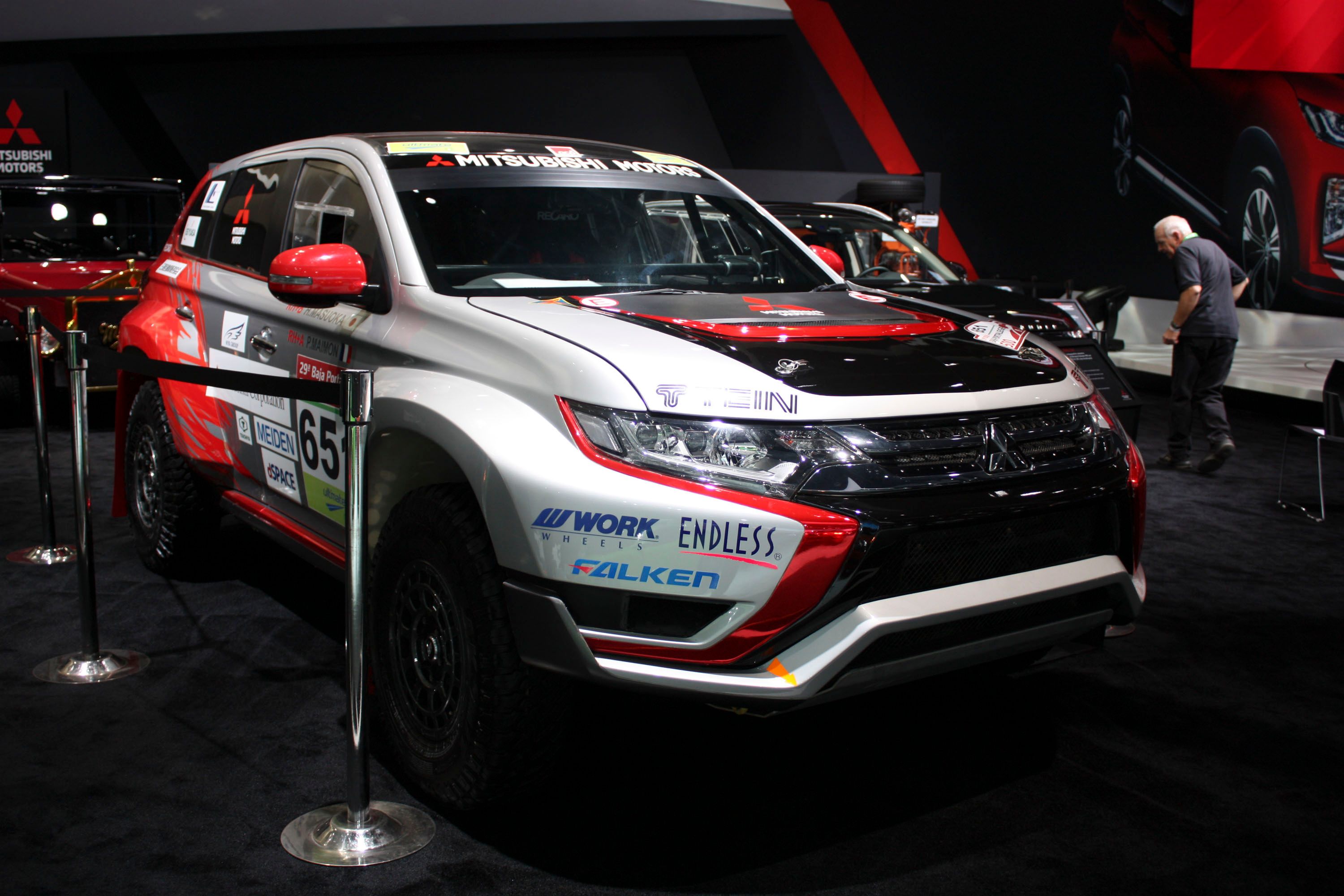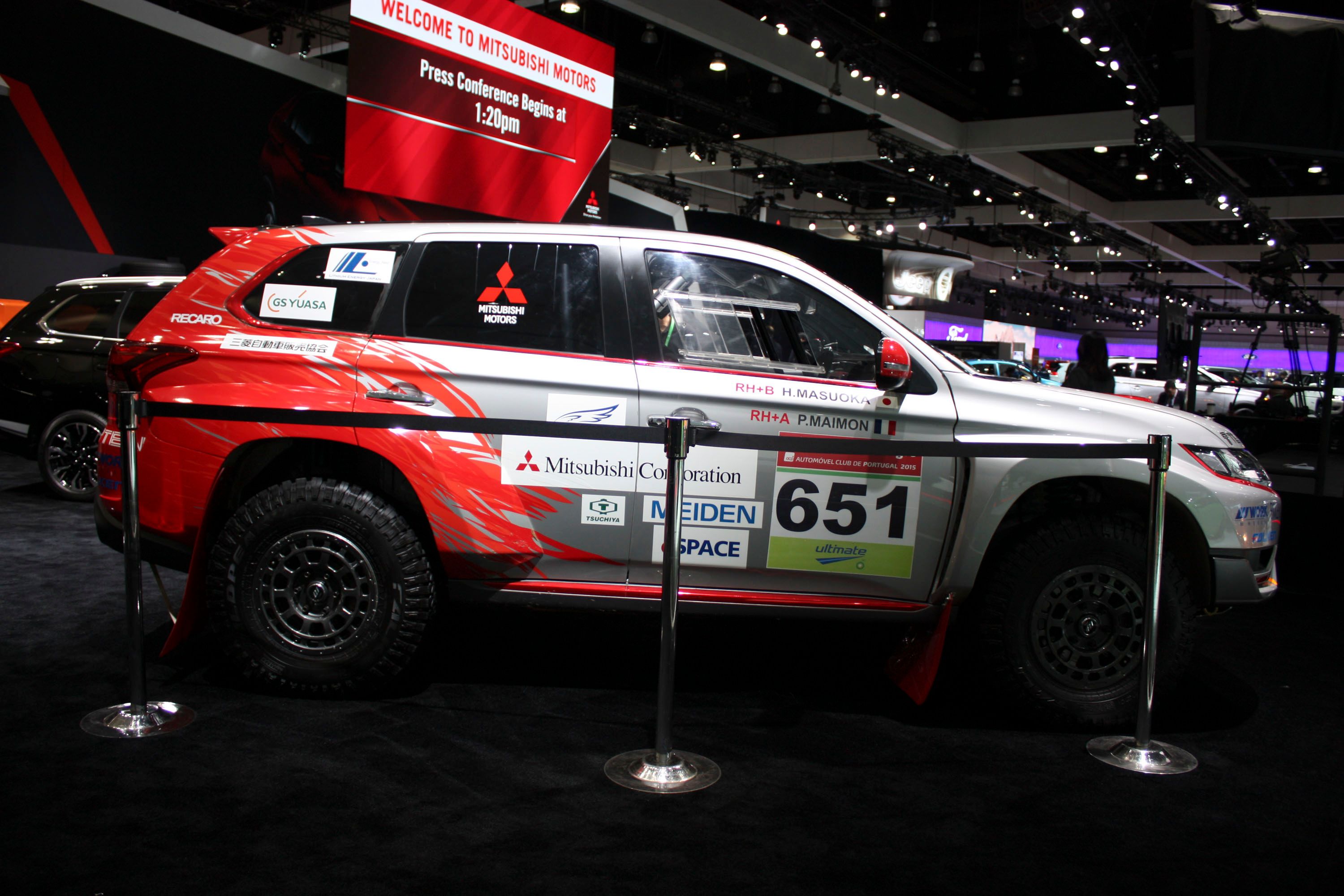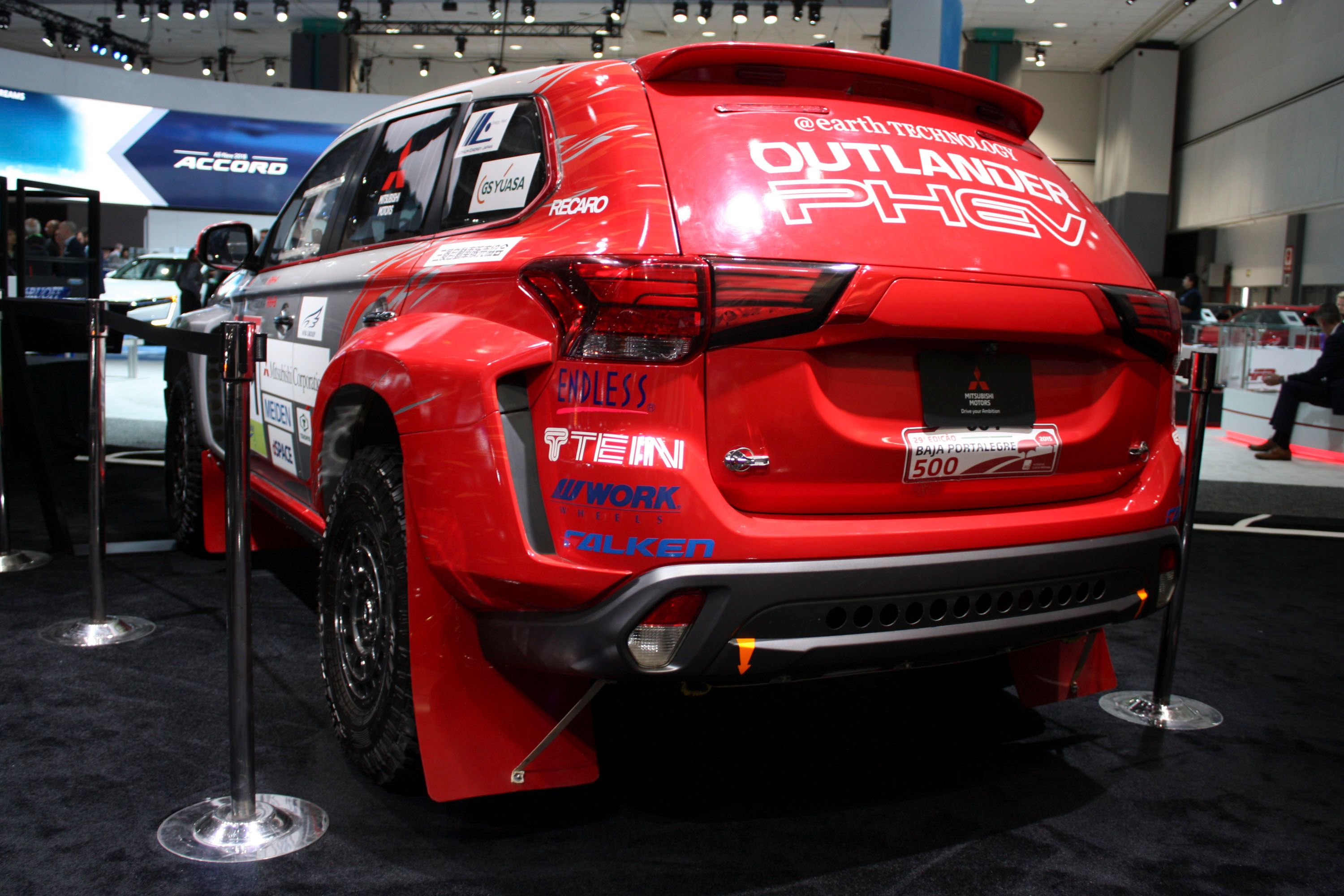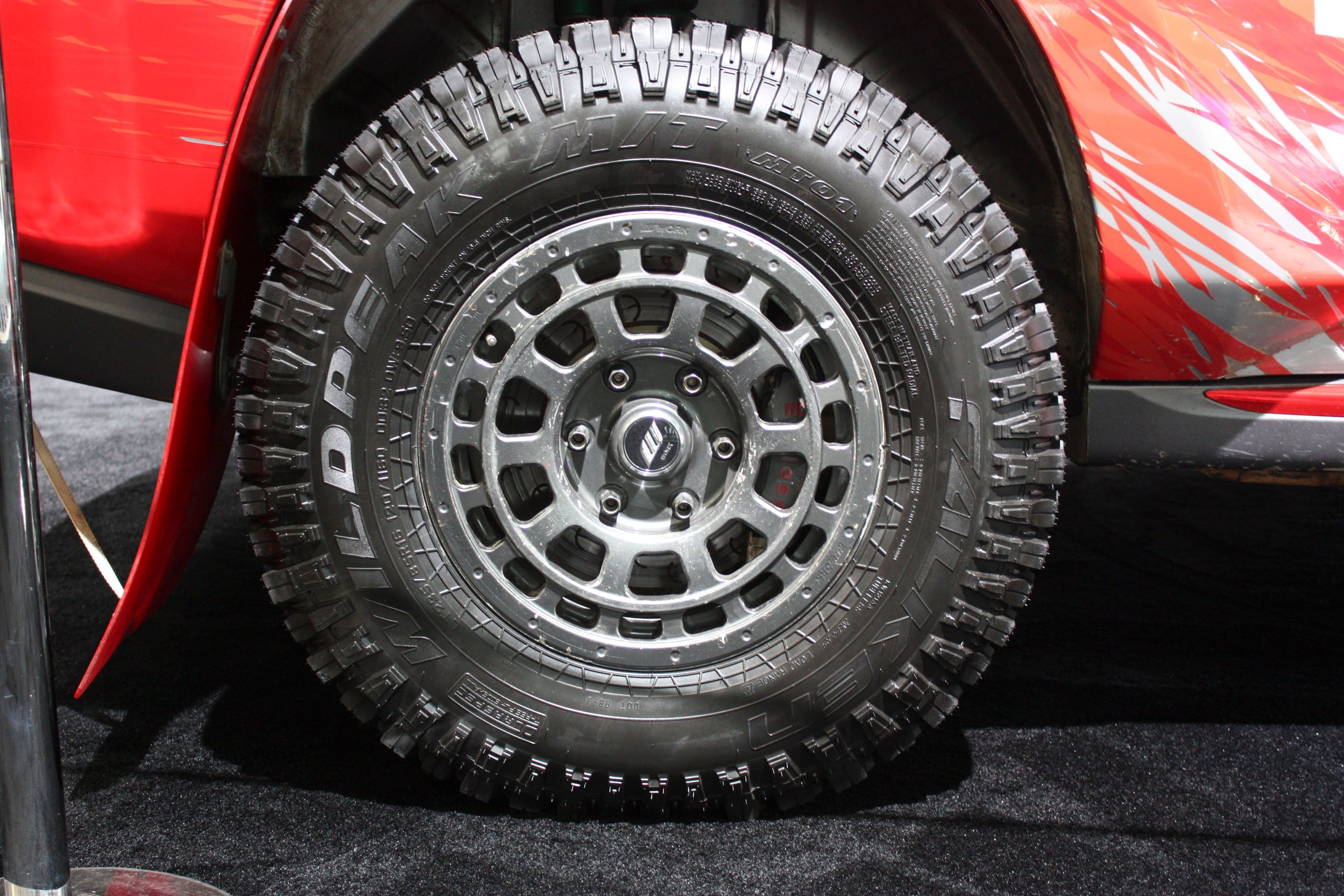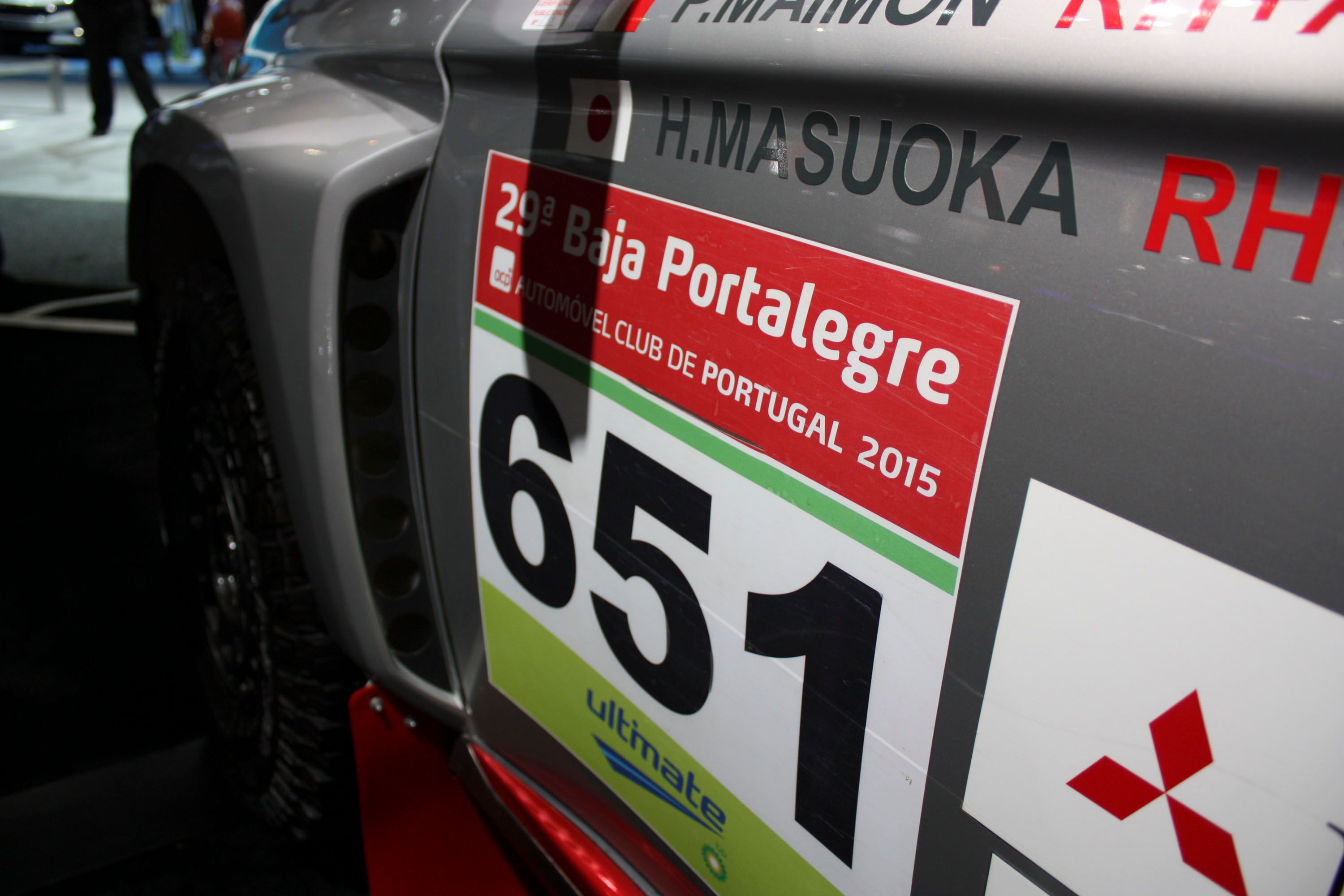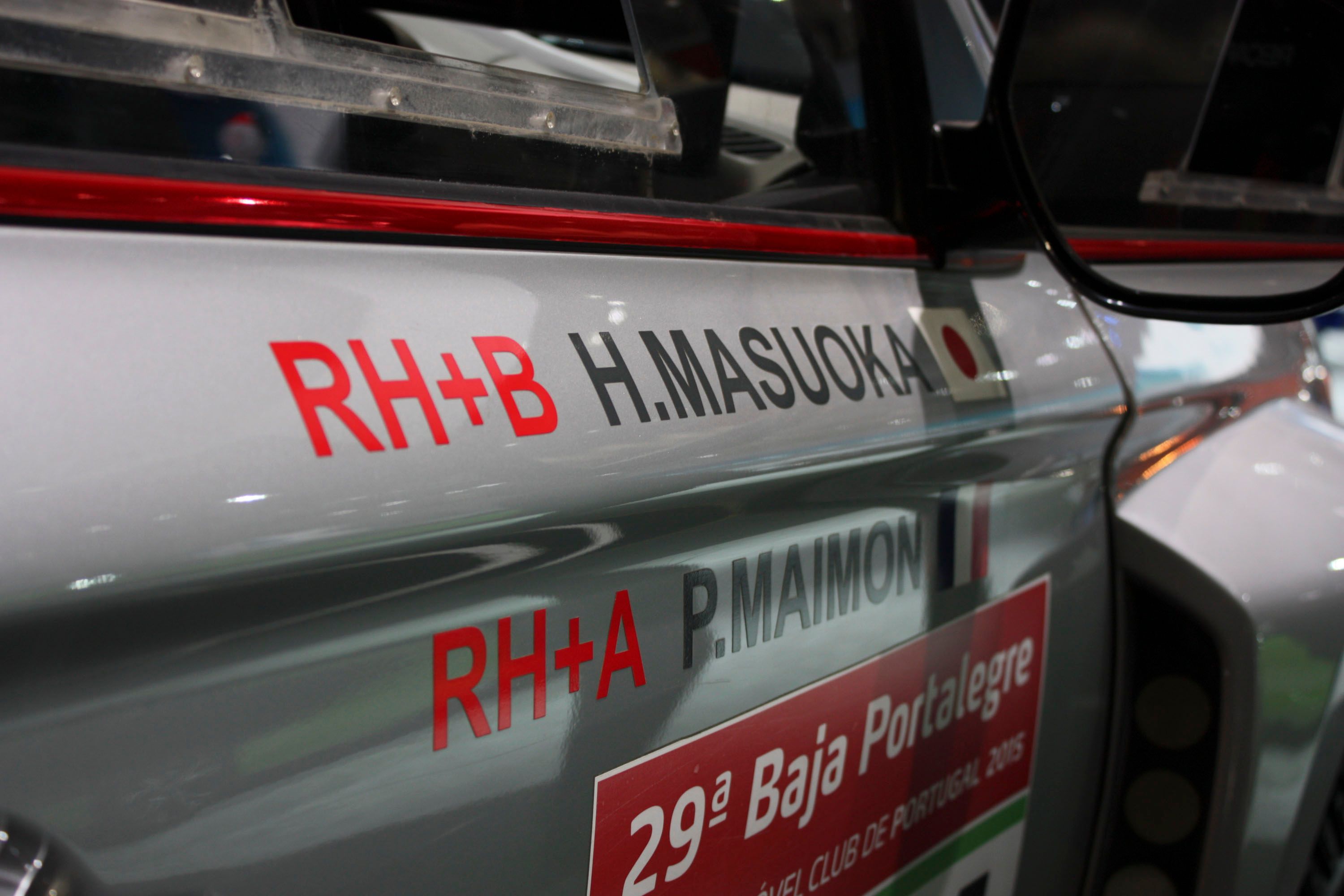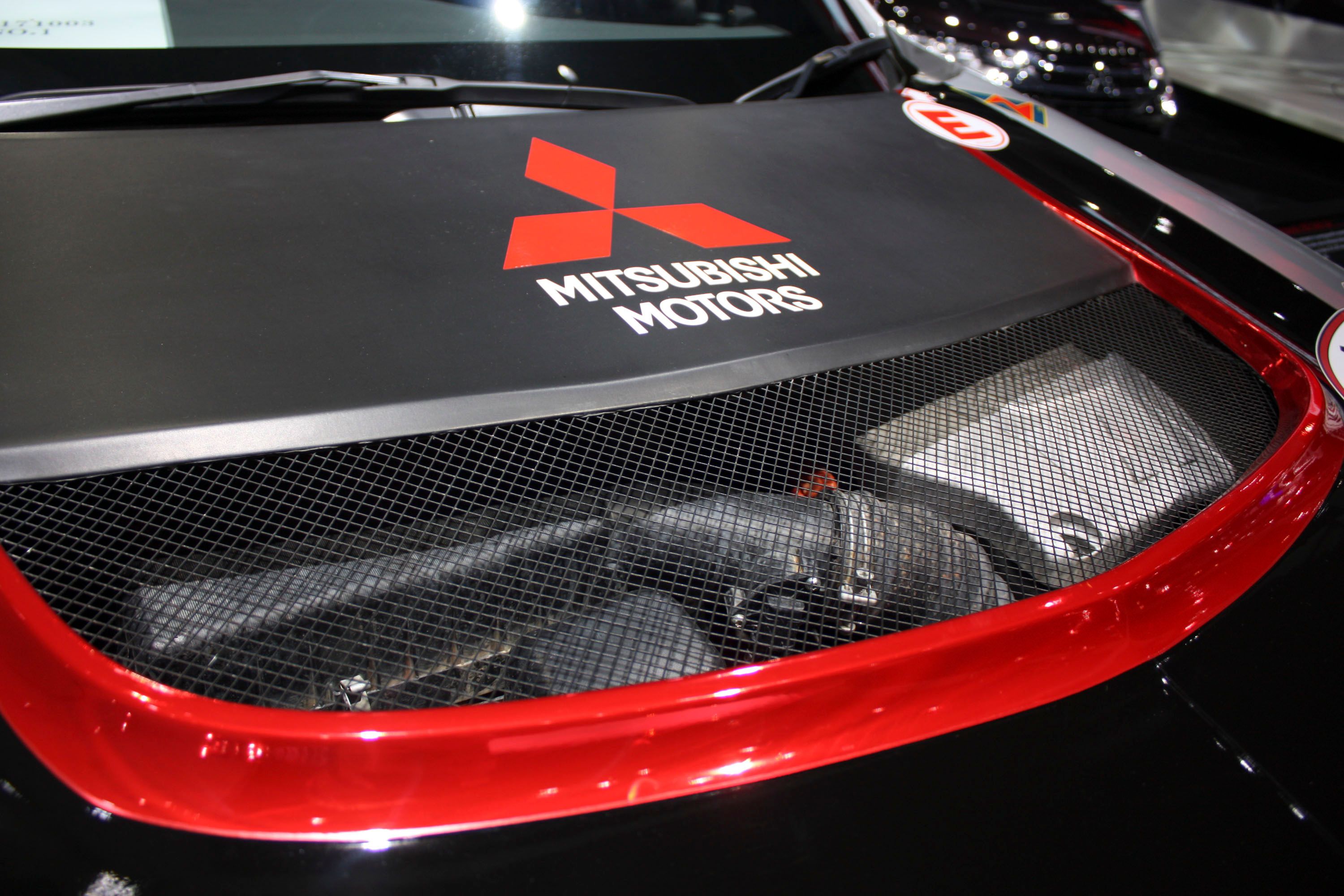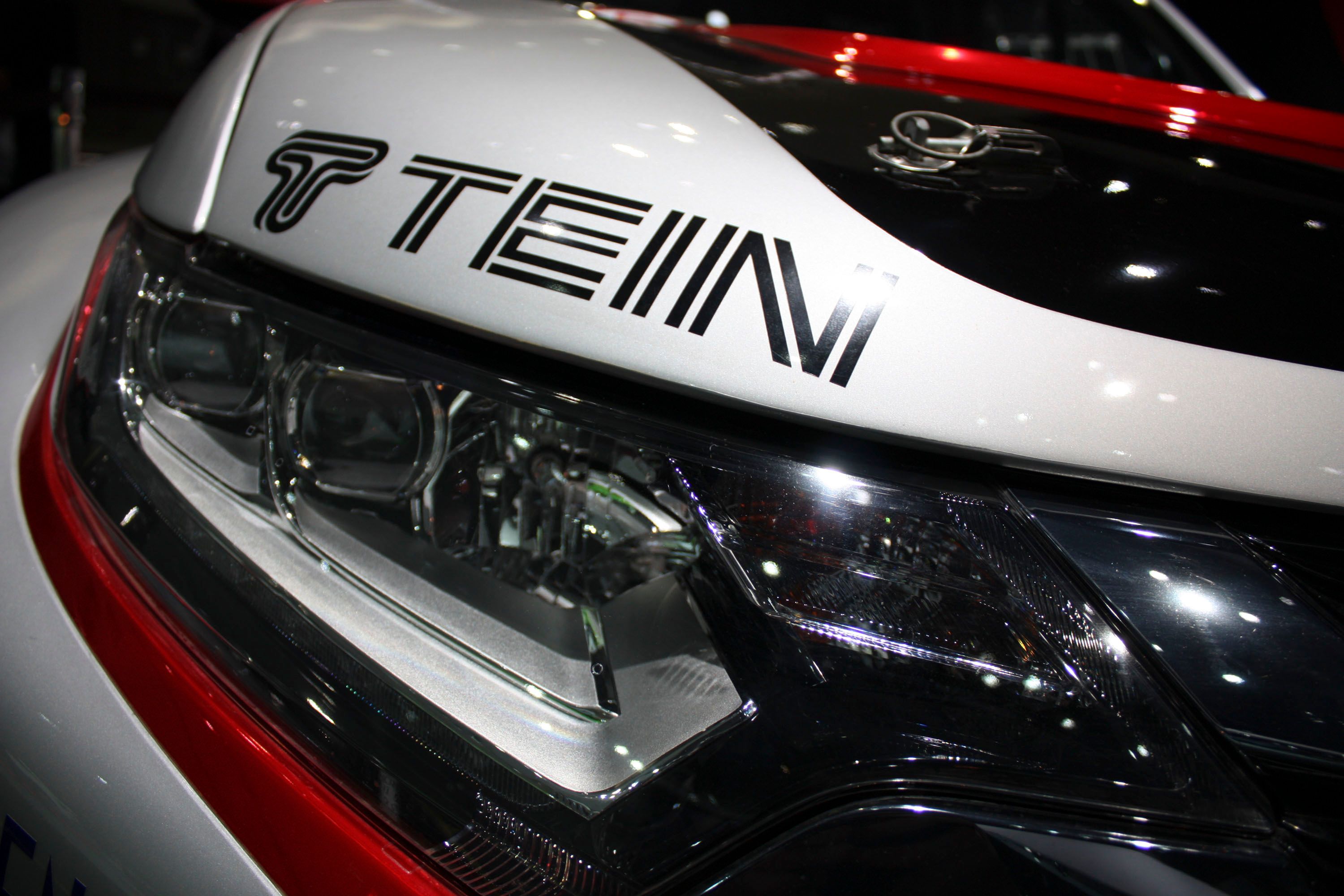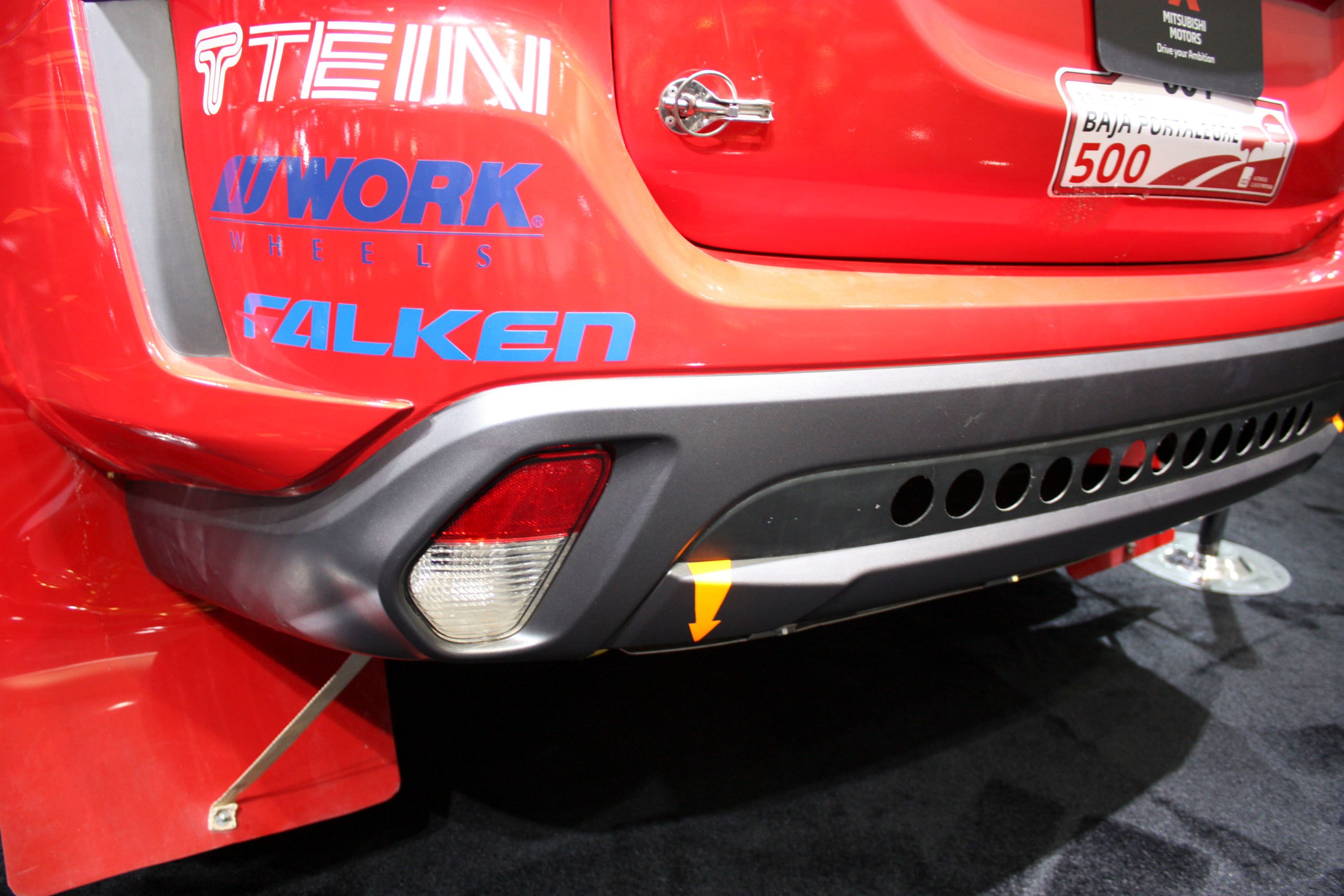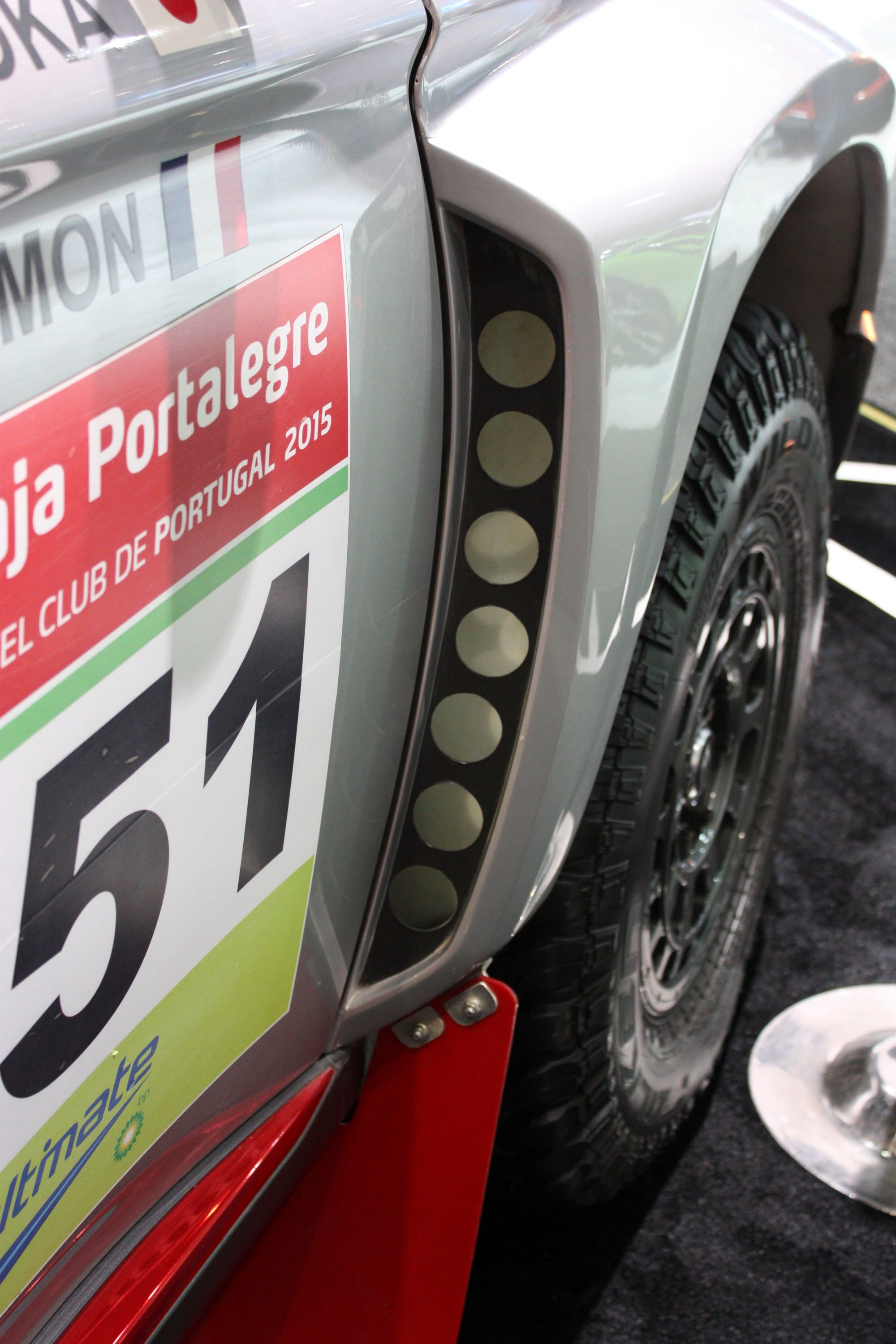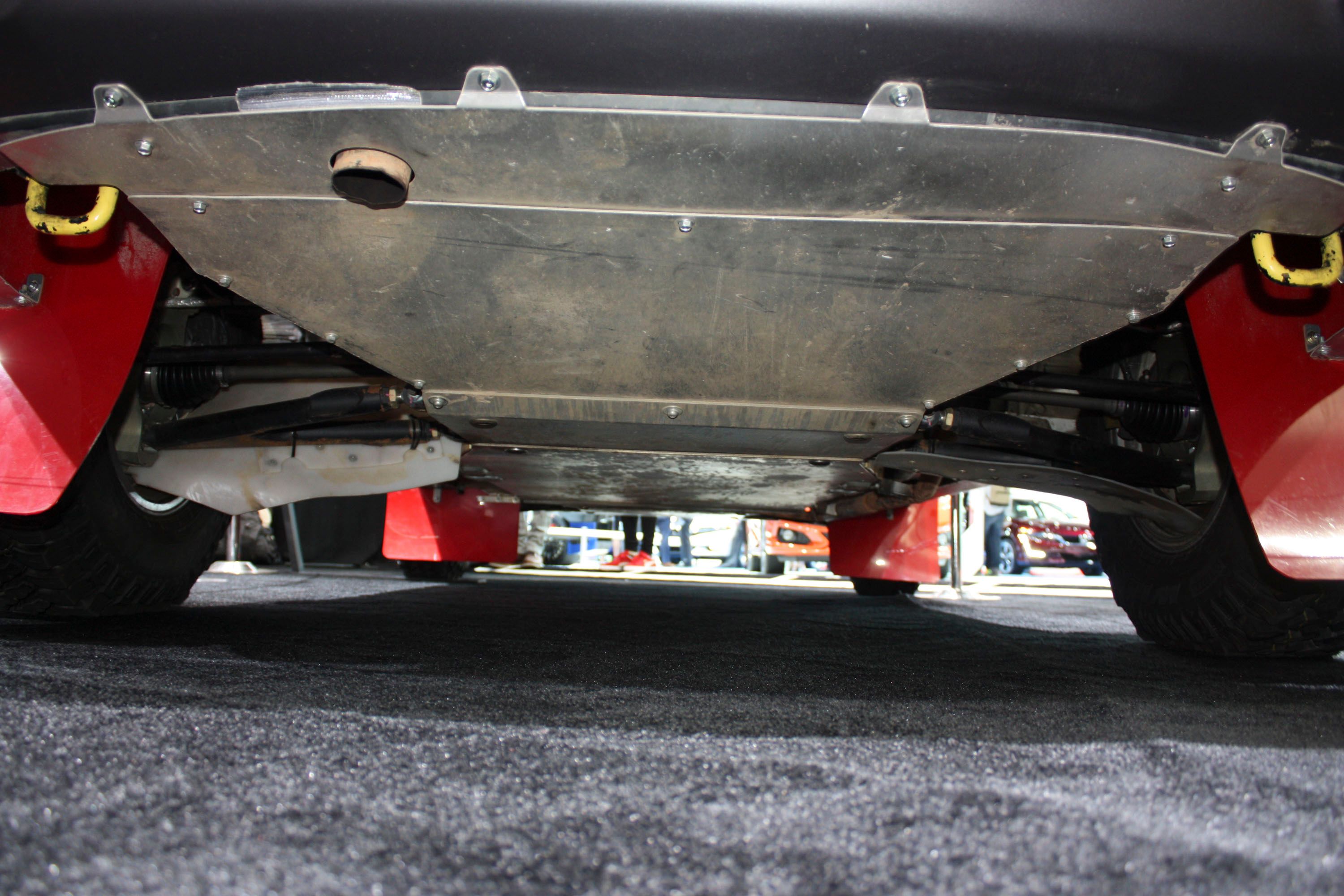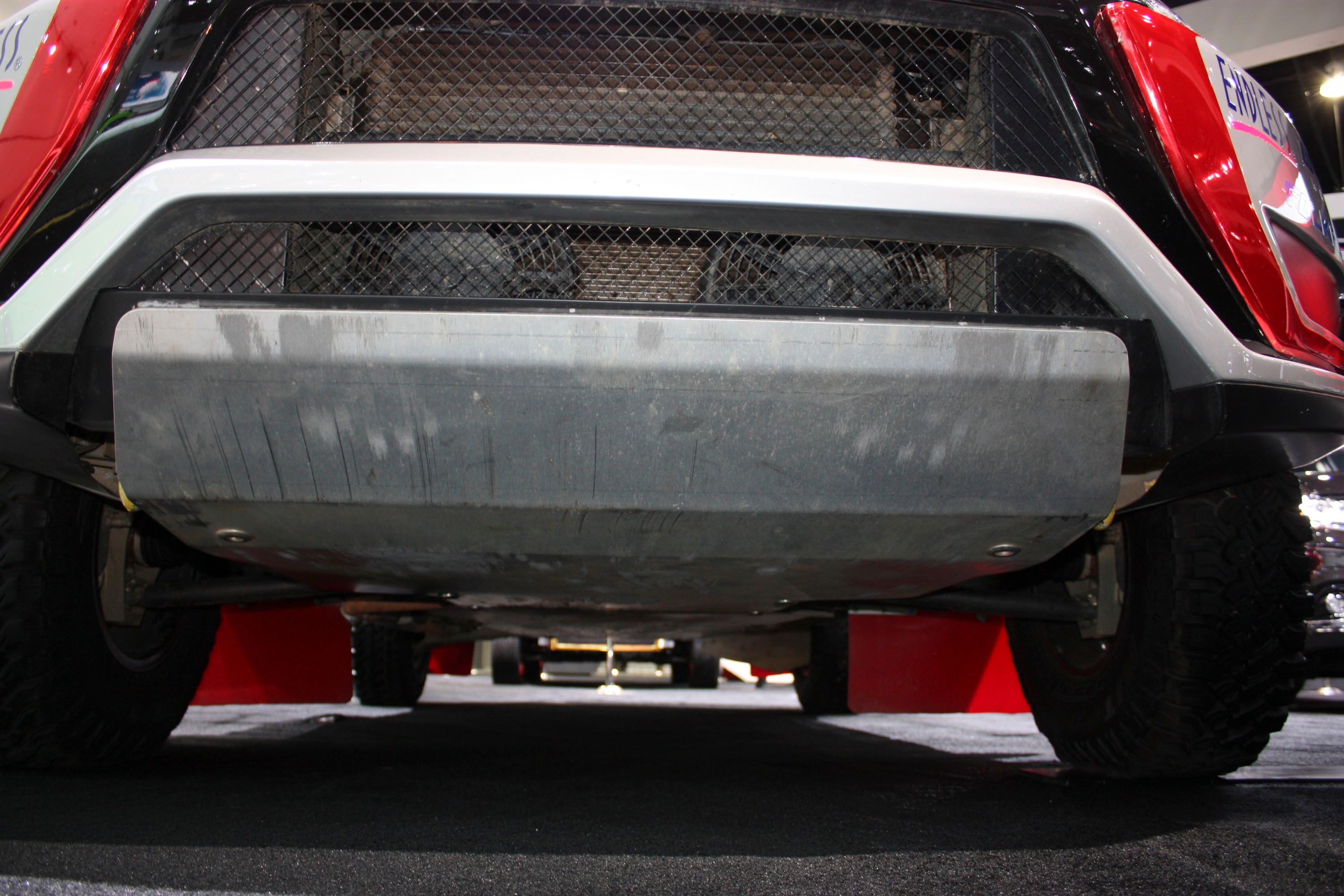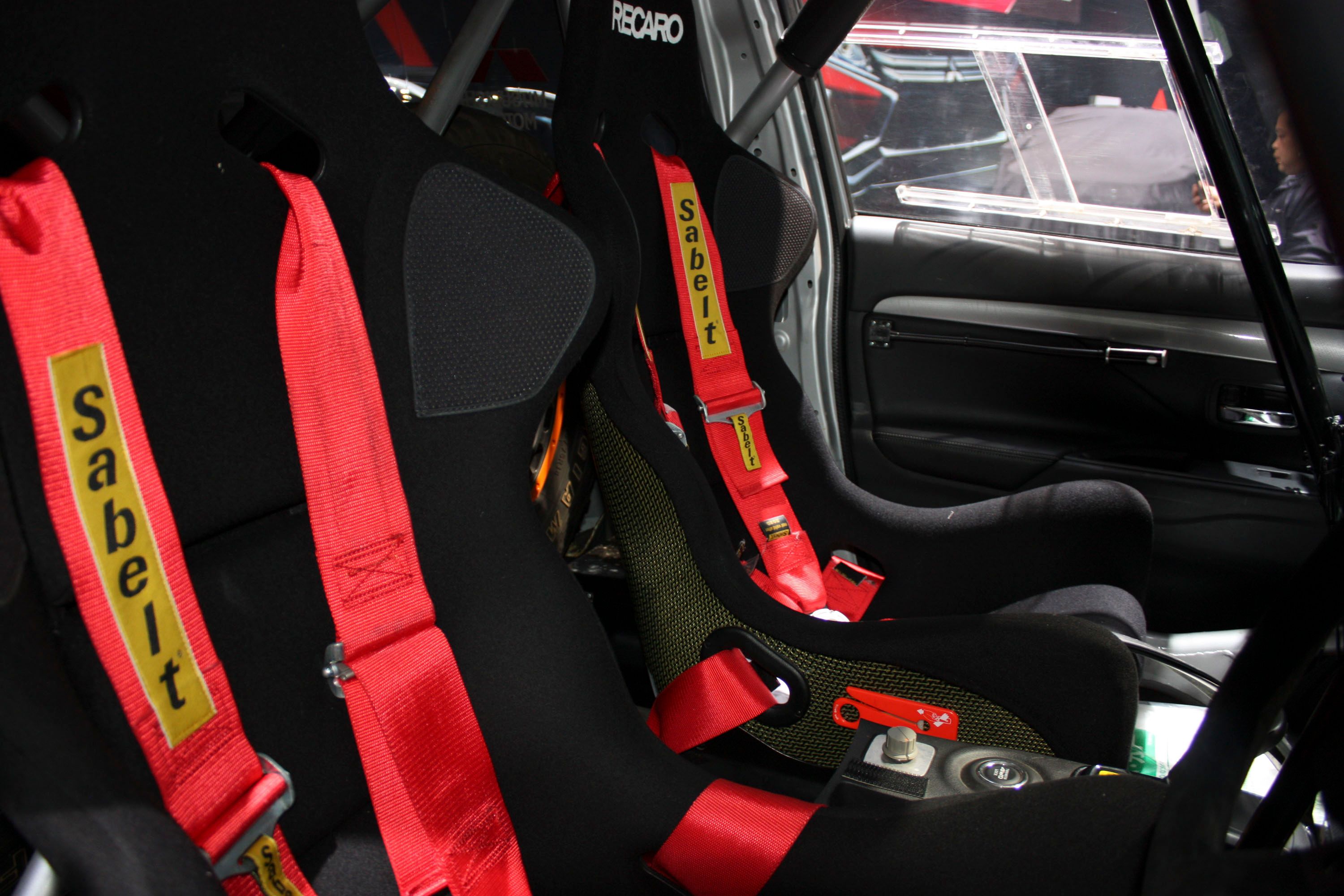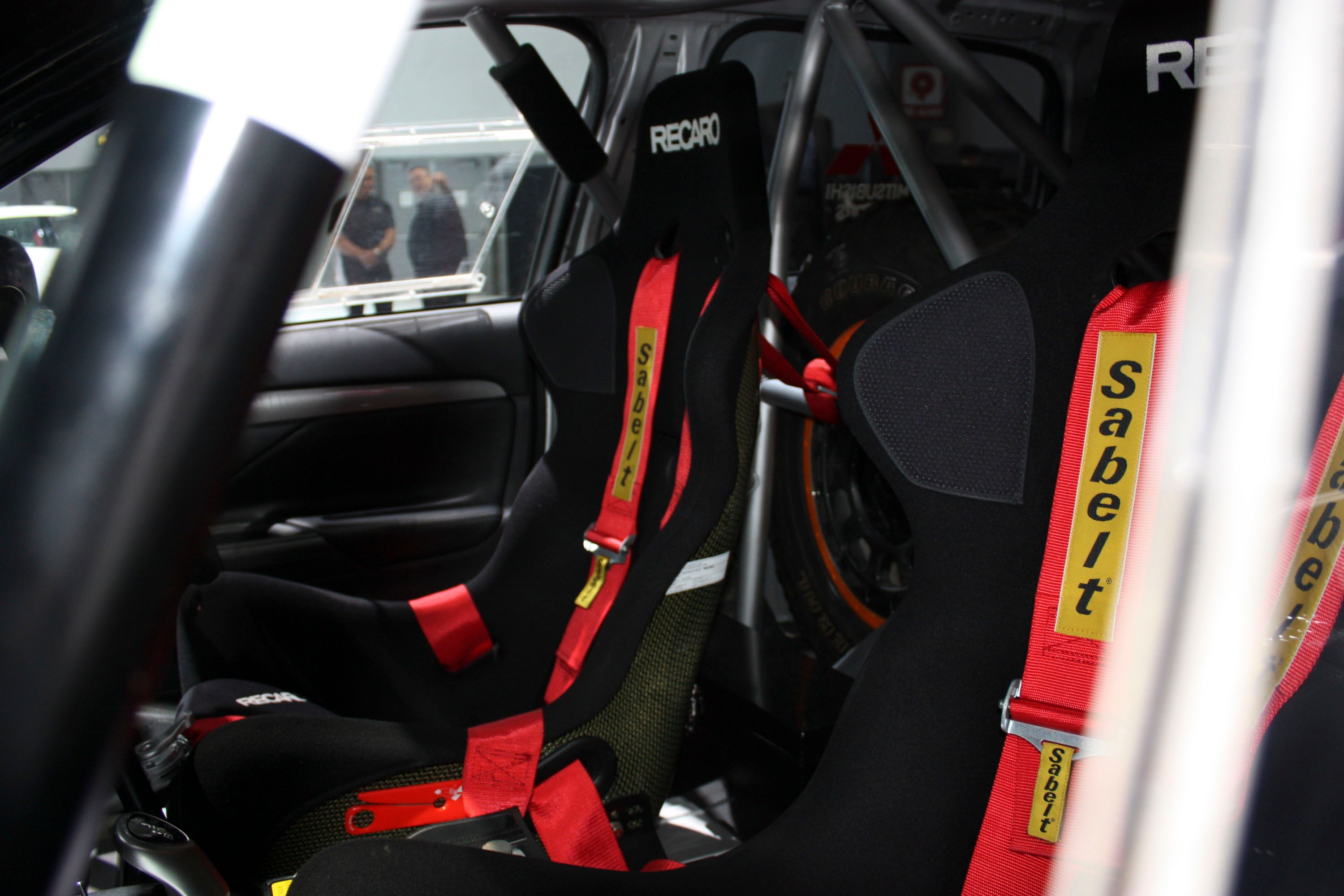Hybrids are unquestionably here to stay in the world of motorsports. From the KERS systems used in Formula 1->ke190 to the hybrid->ke147 race cars->ke148 that have won the last 4 years in a row at Le Mans,->ke1591 hybrid technology has proven very useful for going fast. But plug-in cars haven't quite so readily adopted for racing, as limited range and long charging times make them of limited use. But Mitsubishi->ke58 is really determined to make the idea work with its rally car based on the Outlander->ke1397 plug-in hybrid. The car has been racing for a while, but Mitsubishi made some changes to it ahead of the Baja Portalegre 500 race.
Mitsubishi has even enlisted the help of two-time Dakar winner Hiroshi Masuoka. So if anybody can make the car a success, it's him. Masuoka is also serving as team captain, and as a co-driver he has Pascal Maimon, who also did co-driver duty when Masuoka won the 2002 Dakar Rally. The car has competed in the Asia Cross Country Rally for the last three years, alongside a number of more traditional off-roaders->ke4846 made by Mitsubishi, such as the Triton->ke1898 and the Pajero,->ke1164 but this will be its first time at the Baja Portalegre 500.
Continue reading to learn more about the Mitsubishi Outlander PHEV Baja Race Car.
mitsubishi-outlander-phev-baja-race-car
- Make: Array
- Model: mitsubishi-outlander-phev-baja-race-car
2016 Mitsubishi Outlander PHEV Baja Race Car
- Make: Array
- Model: 2016 Mitsubishi Outlander PHEV Baja Race Car
- [do not use] Vehicle Model: Array
Exterior
The race car is based on the production version of the Outlander PHEV, and this is all done to drum up publicity for the production car as a viable choice of plug-in, the appearance of the vehicle has been changed as little as possible. It's wearing a livery for the race, of course, and it has big off-road tires as well. The suspension has been beefed up and raised to give it more travel, and the wheel arches have been extended to make the wheels fit.
There is also a large single Evo VIII/IX-style hood vent, but the rest of the bodywork has been left alone. All told, if there were a factory Outlander Evo (and it has been rumored that Mitsubishi is planning to do just that with the next generation of the vehicle), you can imagine that would look pretty much just like this.
Interior
This is one of the more entertaining parts of the race car. There are a lot of the sort of modification that would expect to see in a race car, such as a roll cage and a racing wheel. The carpet has been ripped out and so have all of the seats, with a pair of Recaro buckets being substituted for both the driver and navigator. But the dash has been left stock, so the infotainment system is still there, as well as the climate controls, and the car is even still using the stock gauges. The door panels, with the power lock and window controls are still there, and so is the center console and all of the cup holders.
Drivetrain
The Outlander has received a number of changes, not only from the stock version of the vehicle, but also from previous versions of the race car. The race car, just like the road-going version, has electric motors to send power to the wheels, while a gasoline engine attached to a generator produces electricity when the battery gets depleted. The power output of the motors has been turned up for the race car, and the car has also therefore gotten a bigger generator.
There is a bigger drive battery as well, although it isn't entirely clear whether or not the vehicle gets plugged in at all anymore. The road-going version of the car has an electric-only range of just 32.5 miles, and even with a bigger battery, it will be drained a lot faster when racing, long before the car is anywhere near the end of the stage. So do they even bother plugging it in at this point? We couldn't say for sure, and it's not as though there are any other plug-in hybrid rally cars to compare it to.
Competition
Honda Insight Hybrid Rally Car By Oaktec
There really aren't any plug-in hybrid rally racer to compare the Outlander to, which is sort of the point. But there have been a couple of “traditional” hybrids built for rallying, including this unassuming-looking Insight. This was the hybrid rally racer that was famously kicked out of the Formula 1000 rally championship for being “too fast” back in 2011. Like Mitsubishi, Oaktec took a chance on technology that had never been used in the series before. But it worked a little too well in this case and they got the boot.
Read our full review here.
Citroen C4 Hybrid WRC
Citroen was the first manufacturer to look into the possibility of making a hybrid rally car back in 2009. At that time, Sebastien Loeb was king of WRC, and he ruled from a Citroen-built throne. So the C4 Hybrid car was just a hybridized version of the car that was the current WRC champ. It never actually raced, and Peugeot soon switched to the DS3 anyway, but it was an interesting idea for a little while there.
Read our full review in here.
Conclusion
Assuming that the Mitsubishi team intend to plug the car in and start off the rally stages with a full battery, the Baja Portalegre 500 rally is a much more suitable place for it race than the Asia Cross Country Rally. Not only is the rally itself much shorter, but the stages are as well, allowing for the car to fully recharge overnight. Mitsubishis are a common sight at both events, but it seems that this one is better suited to a plug-in vehicle, and hopefully this means we'll be seeing some better results from the Outlander PHEV.

